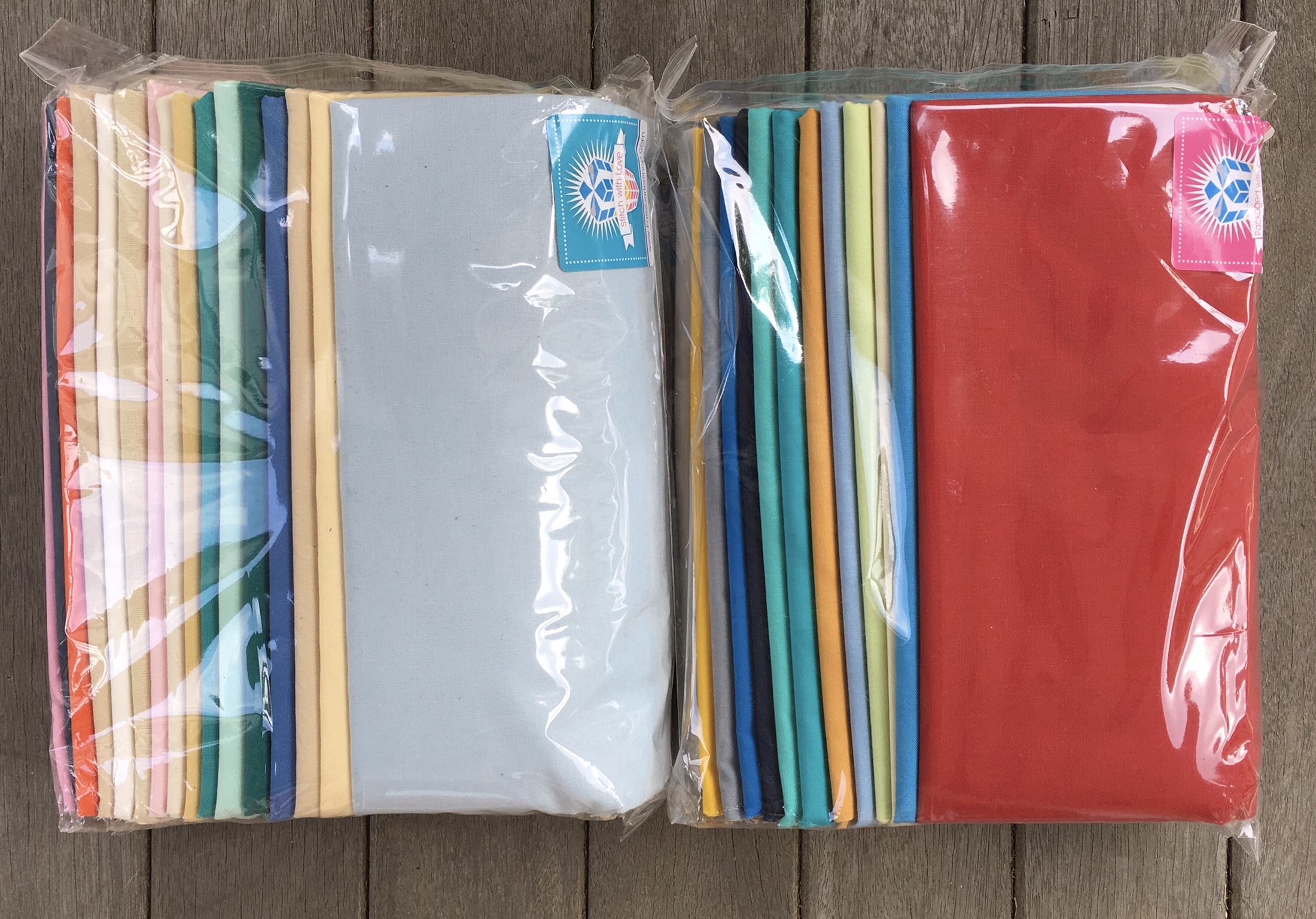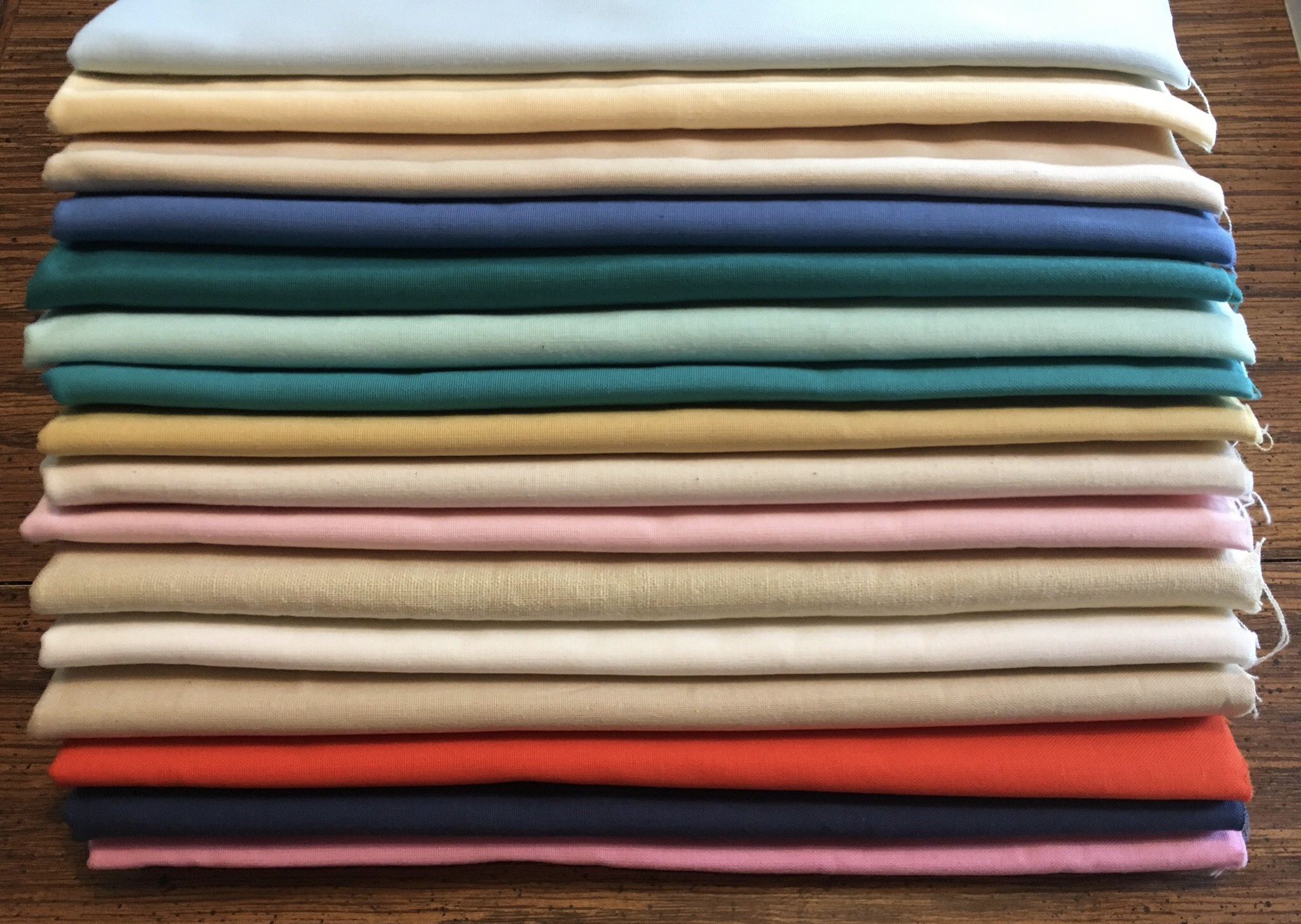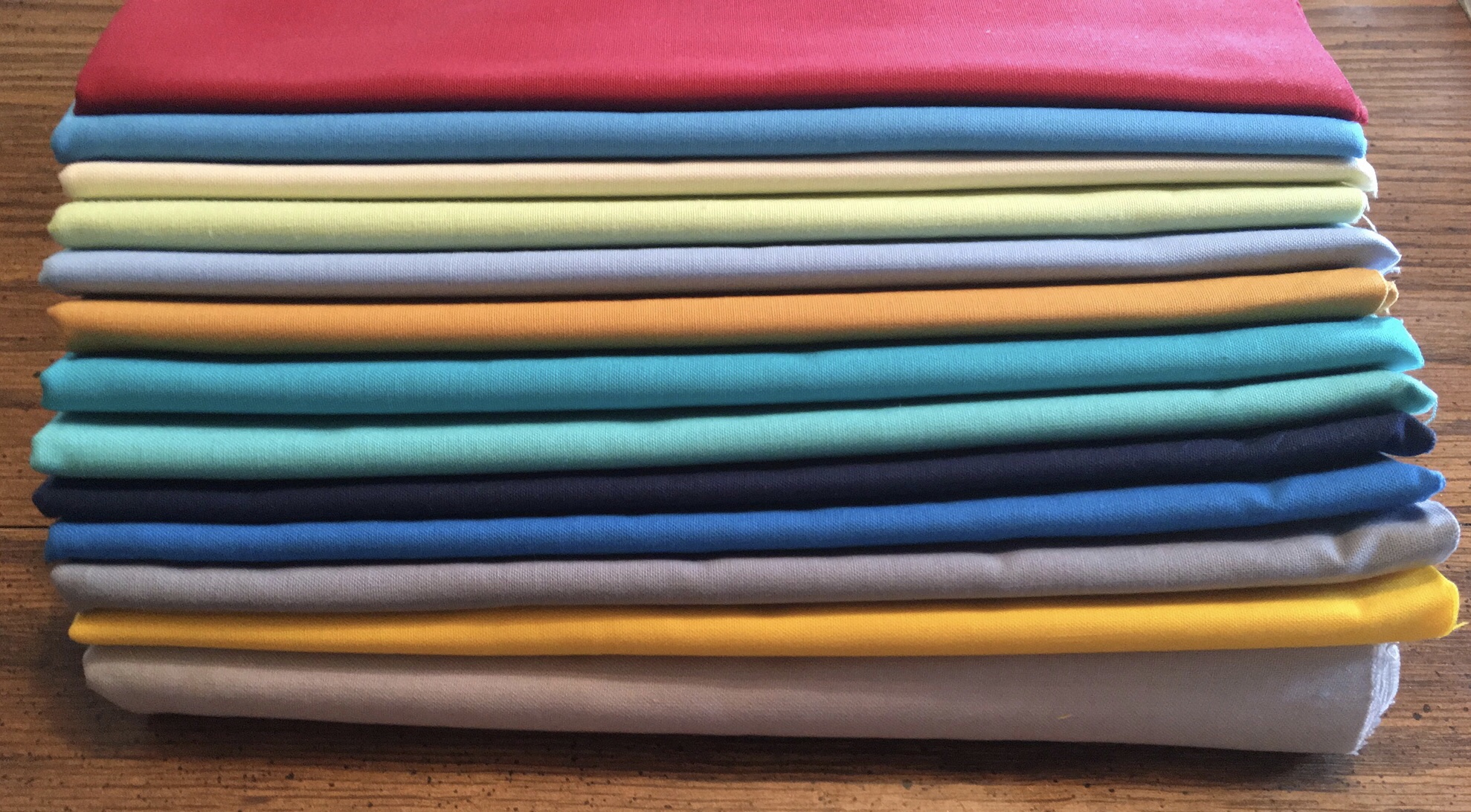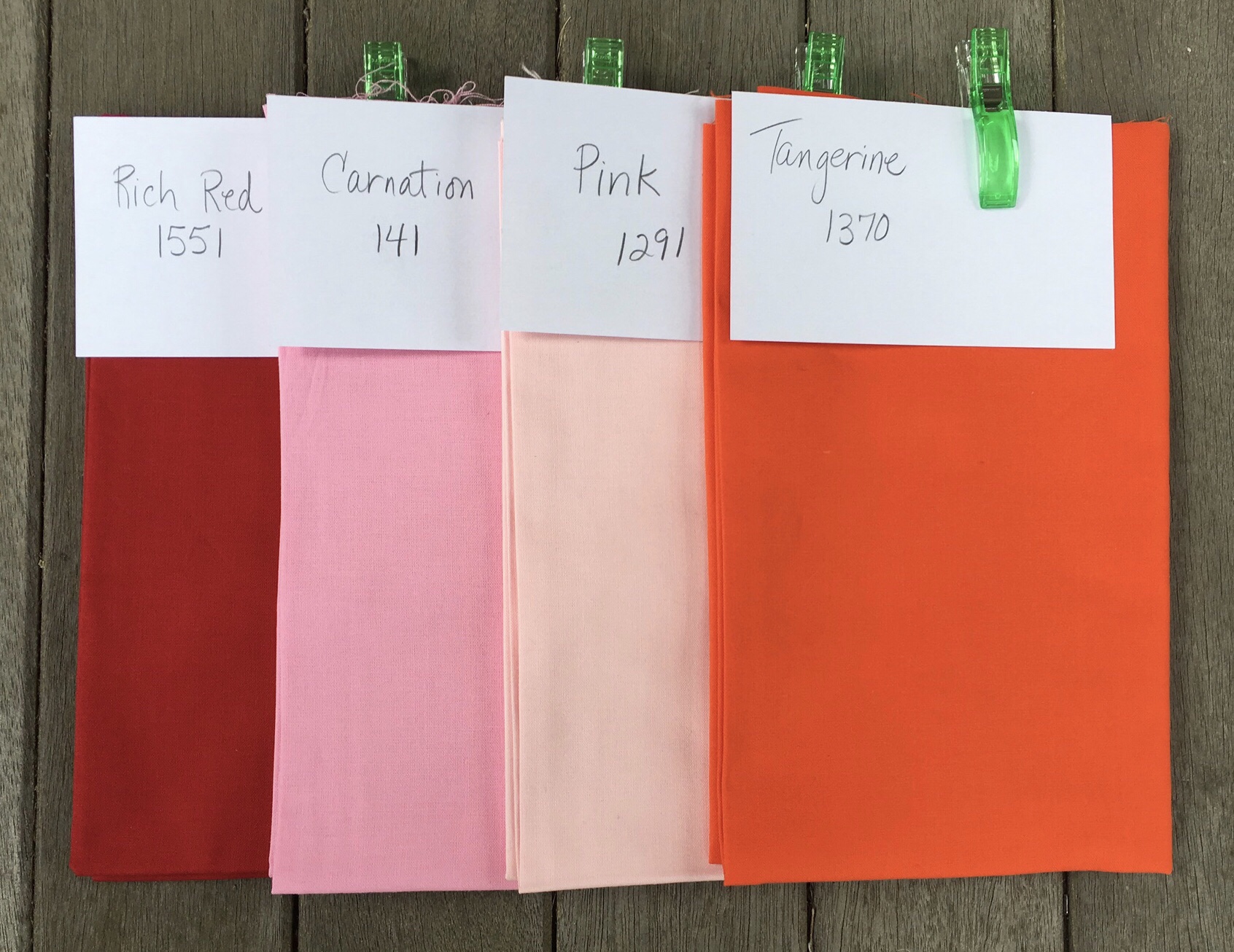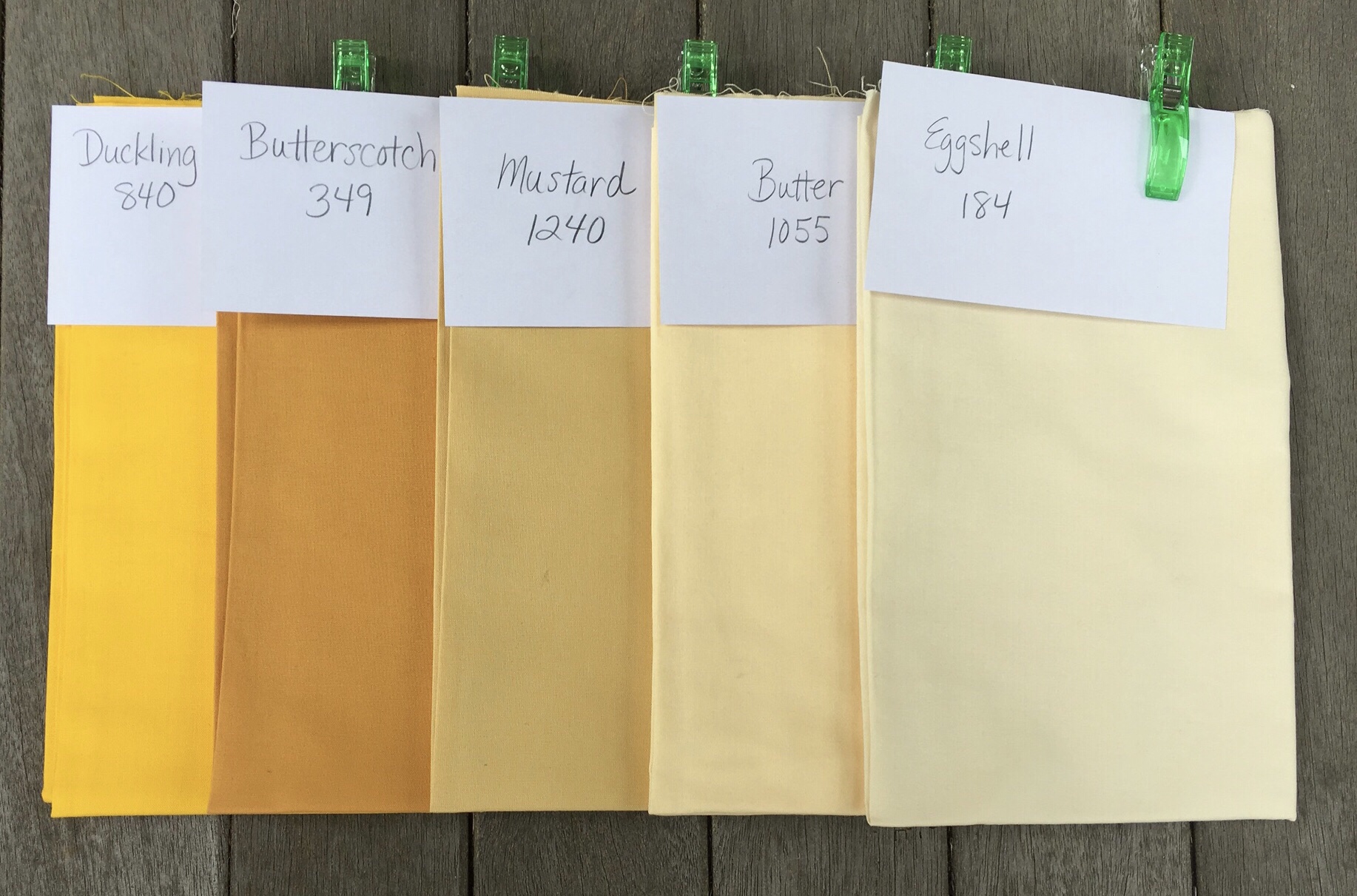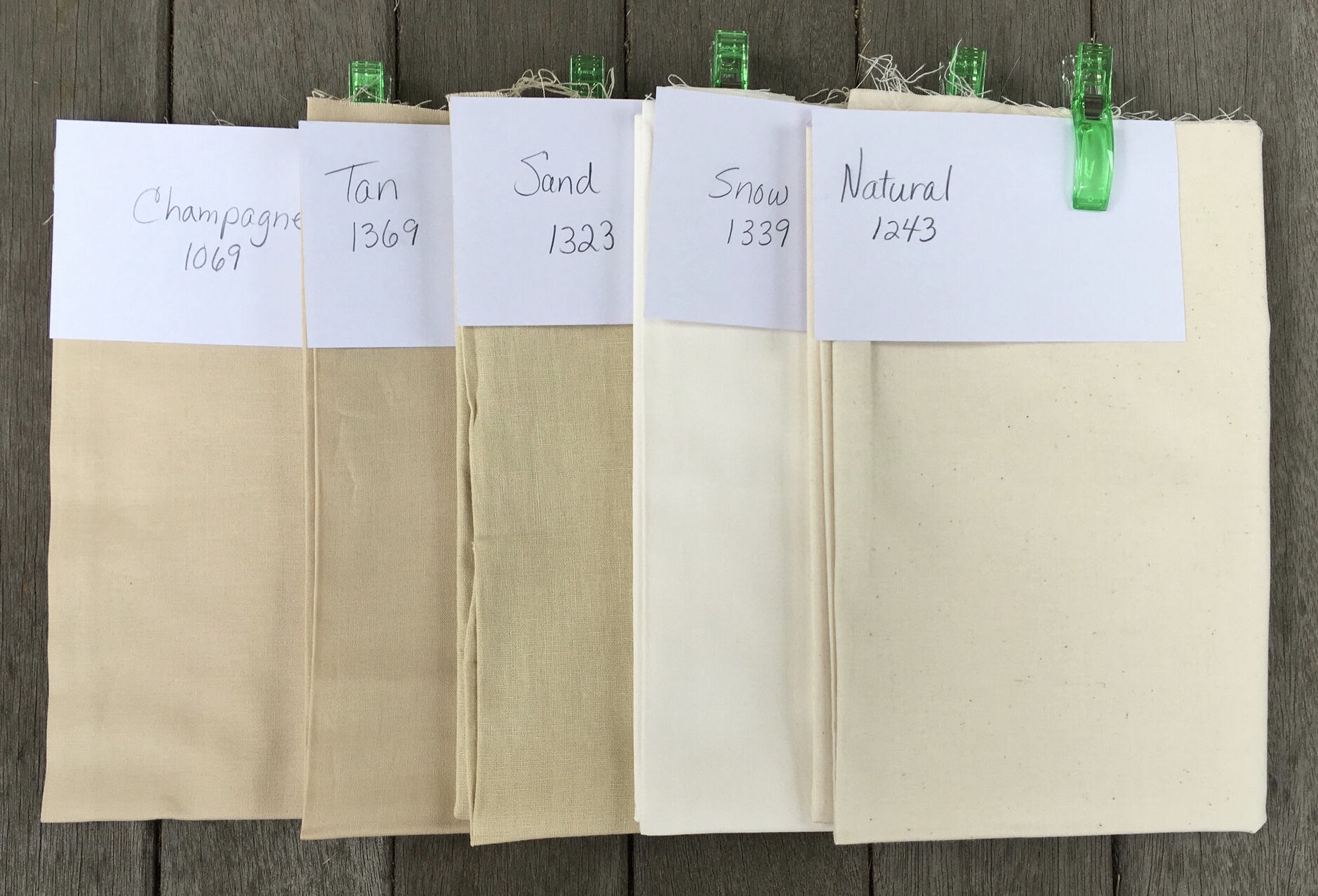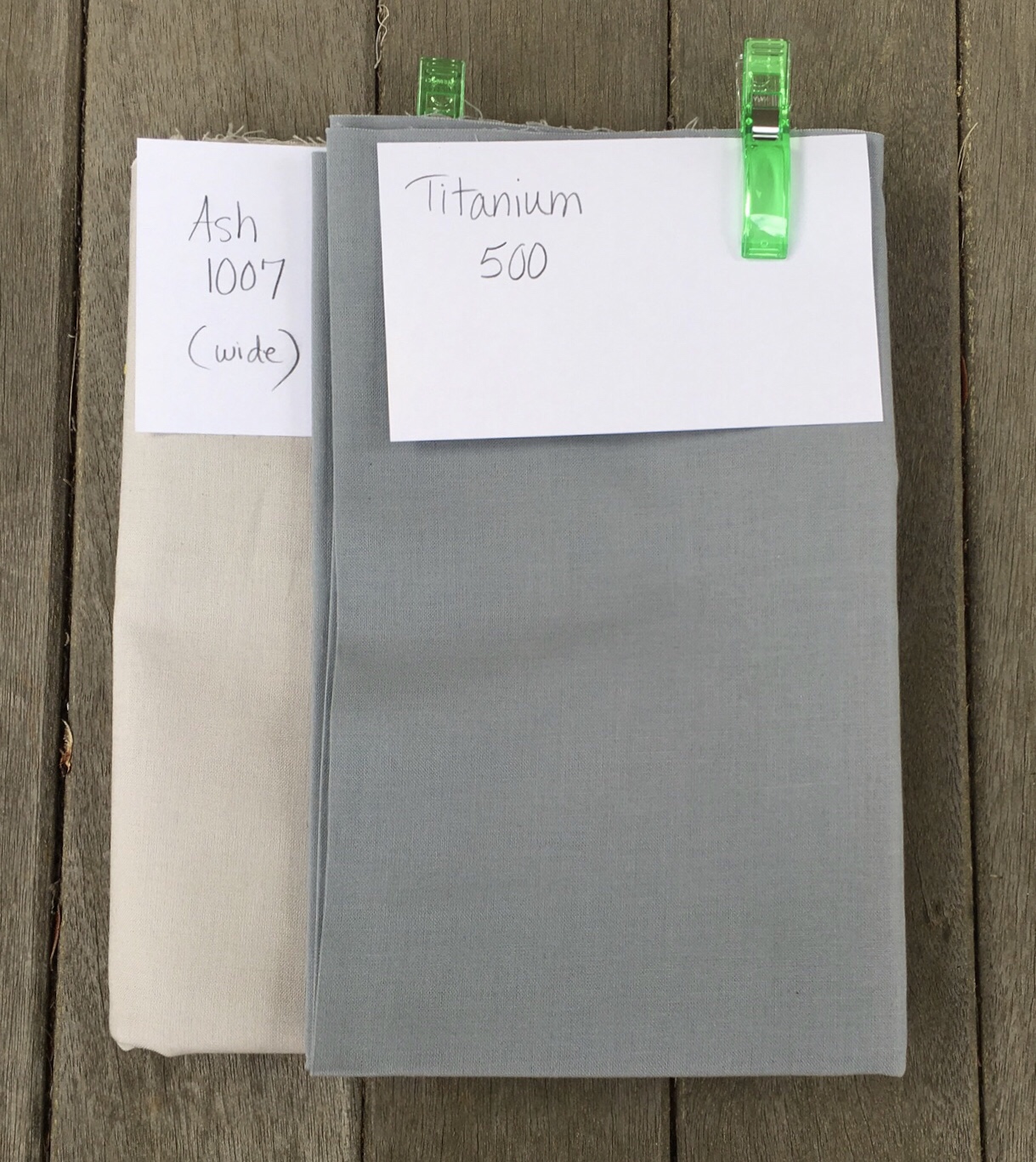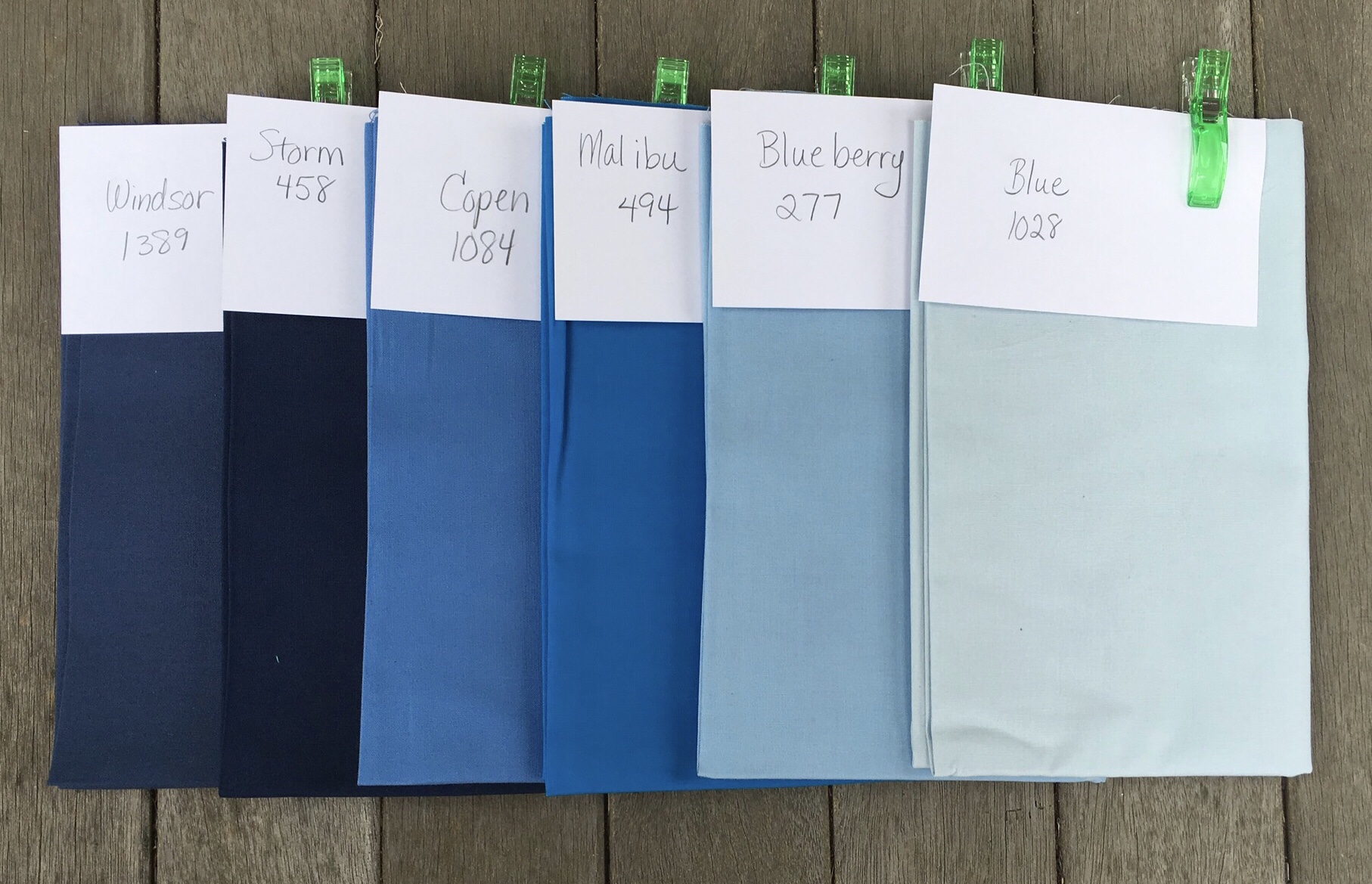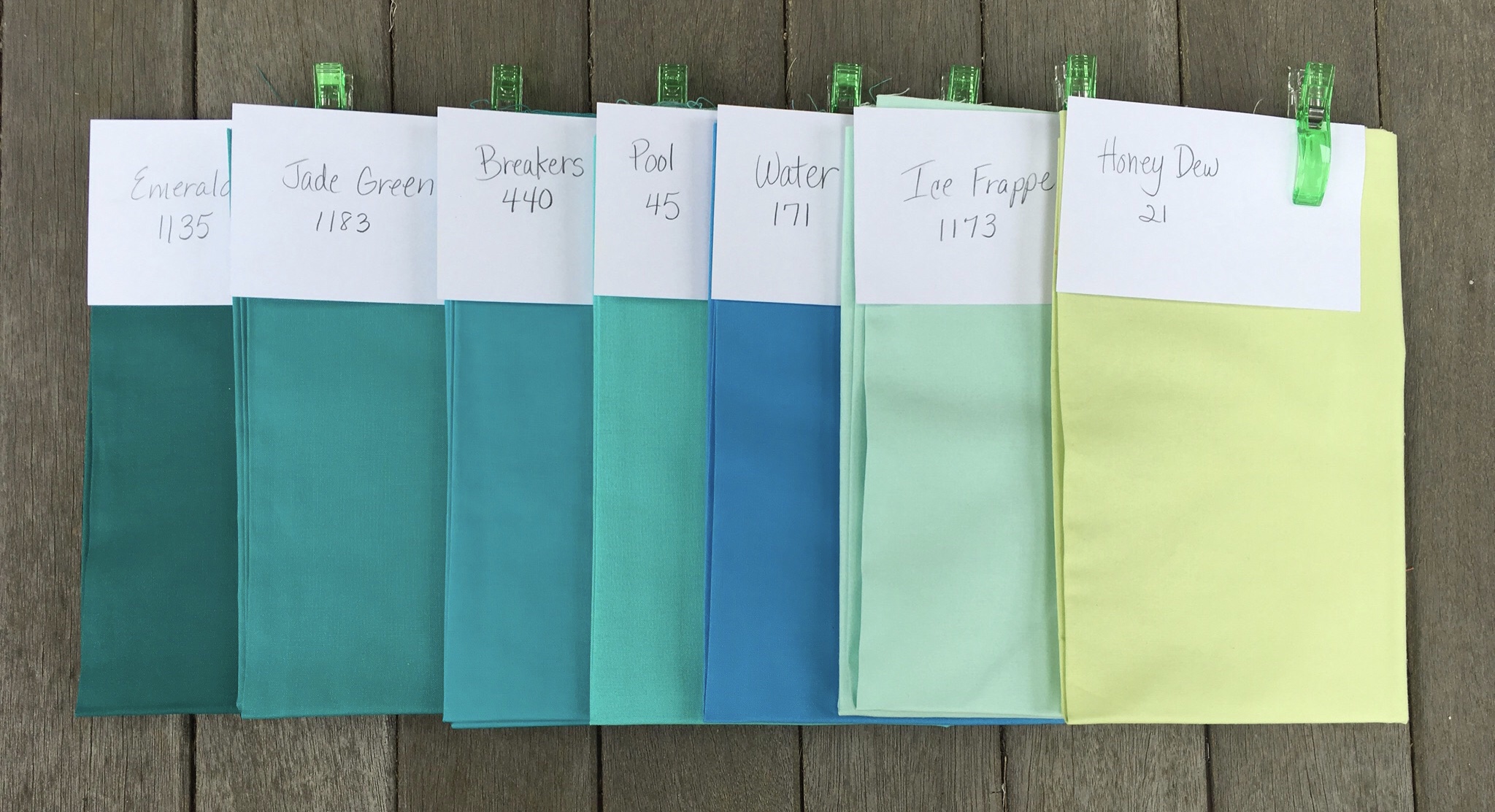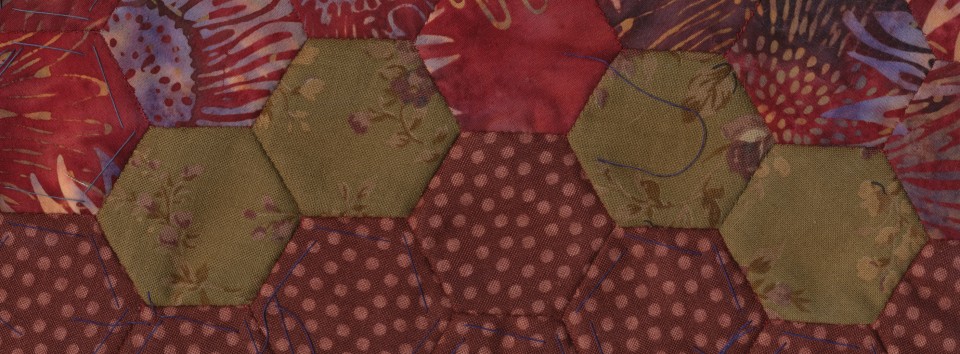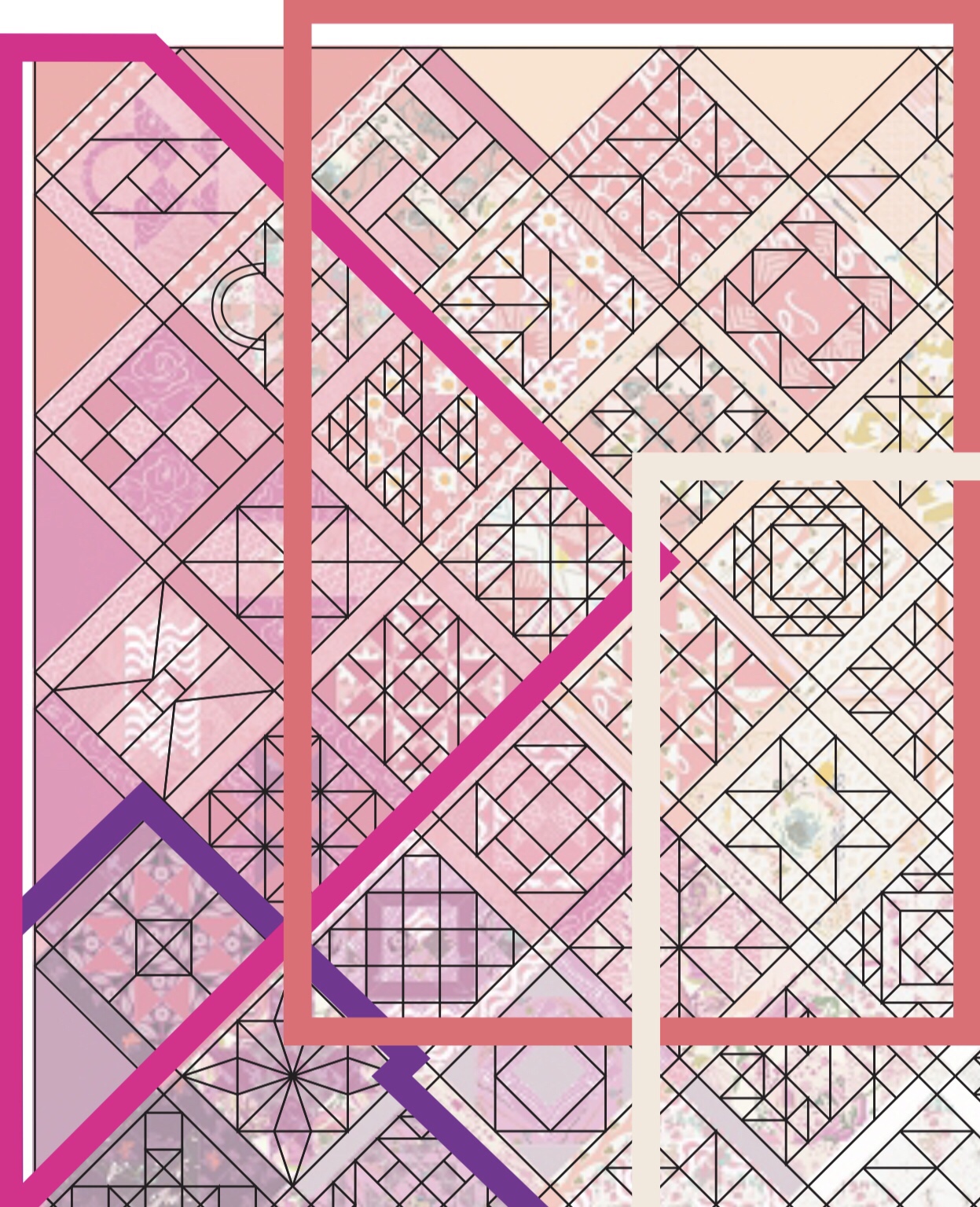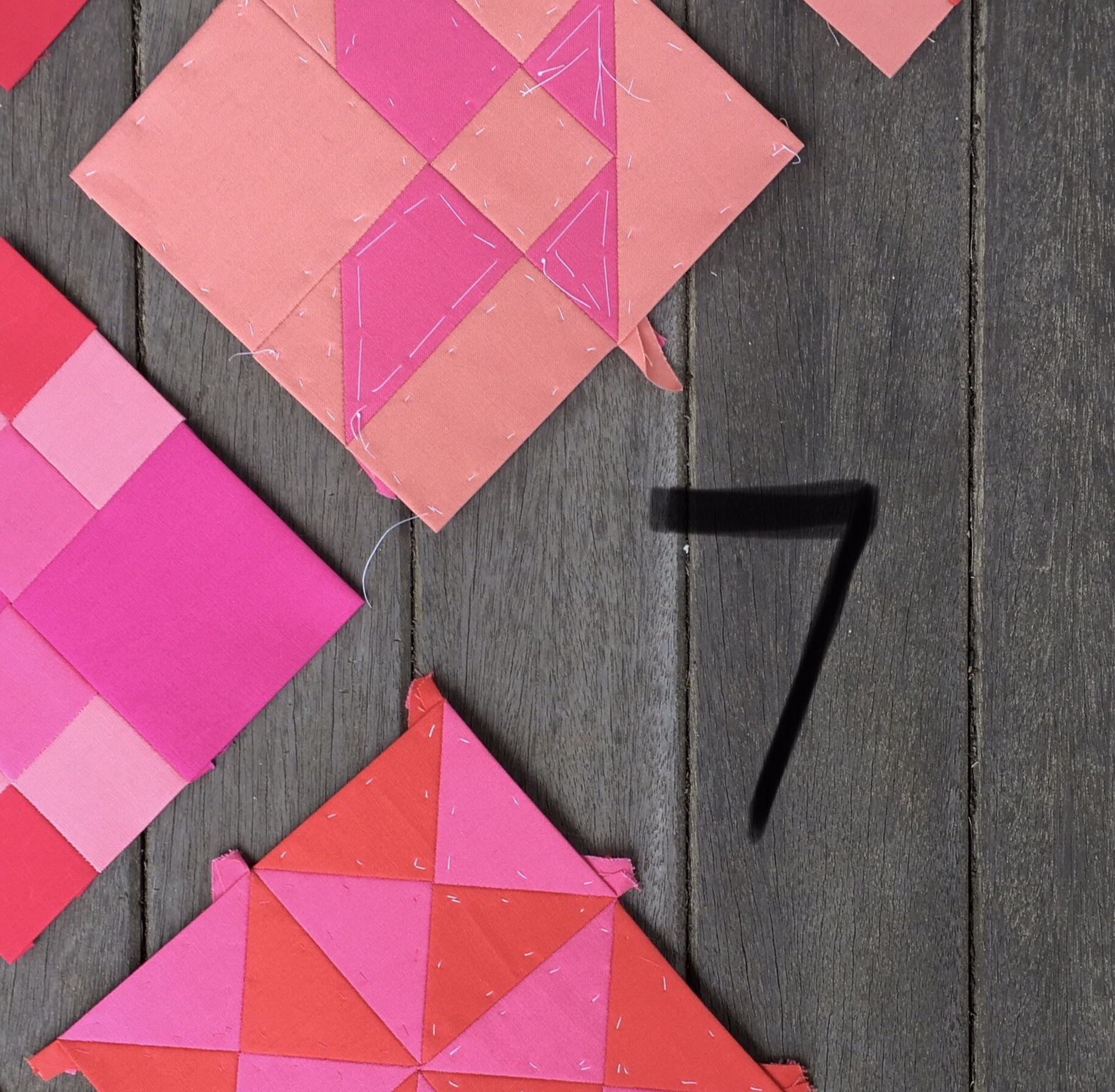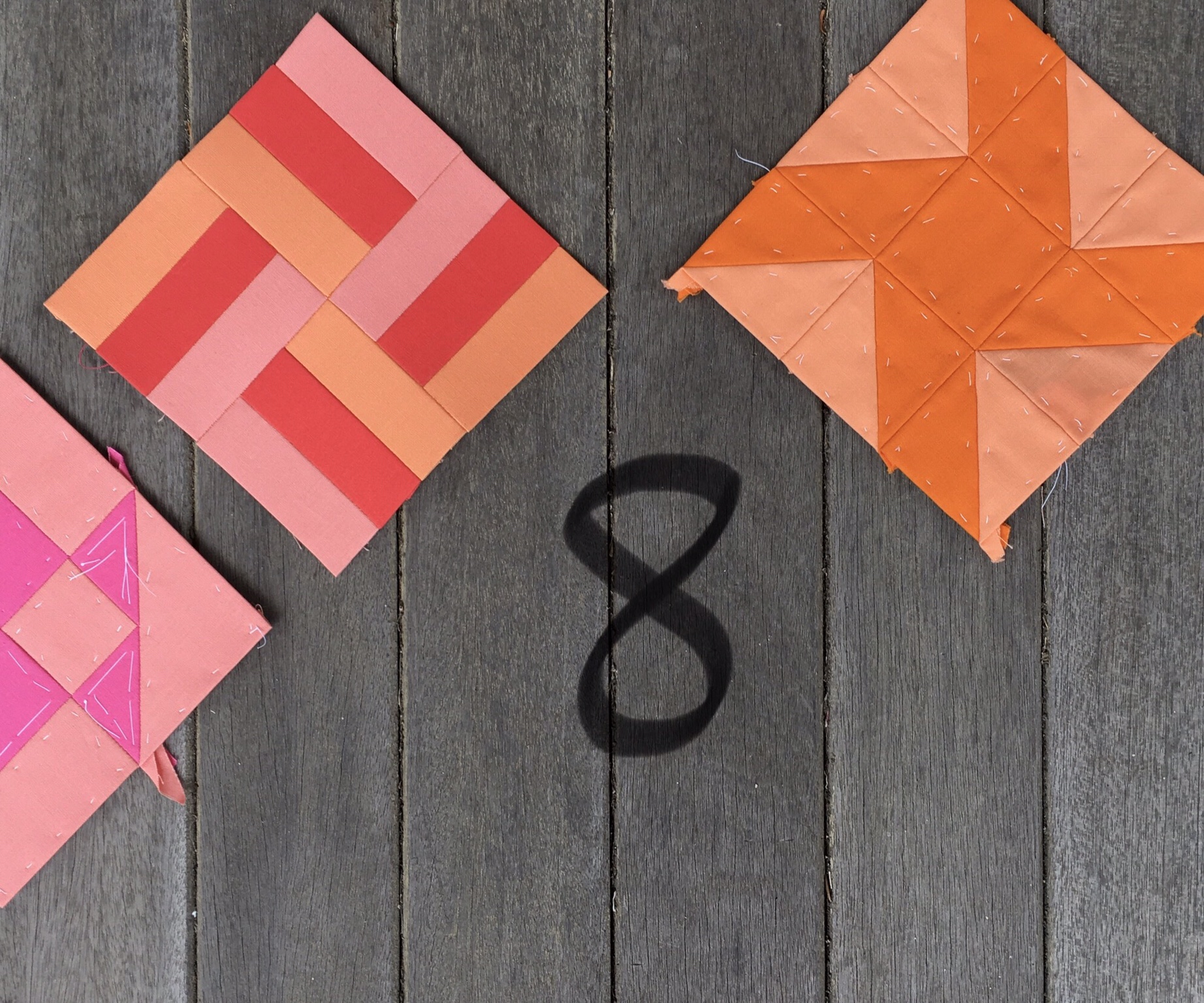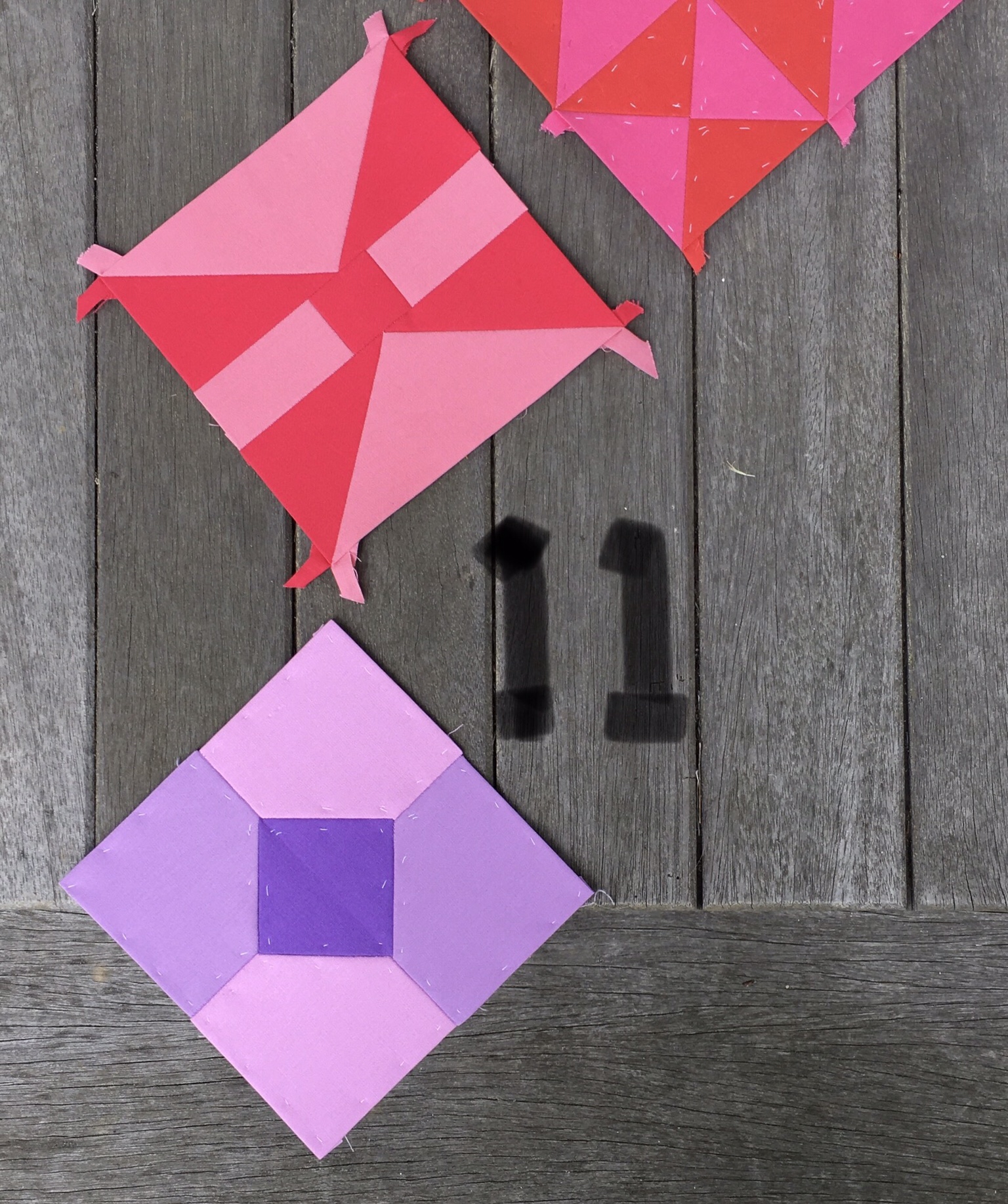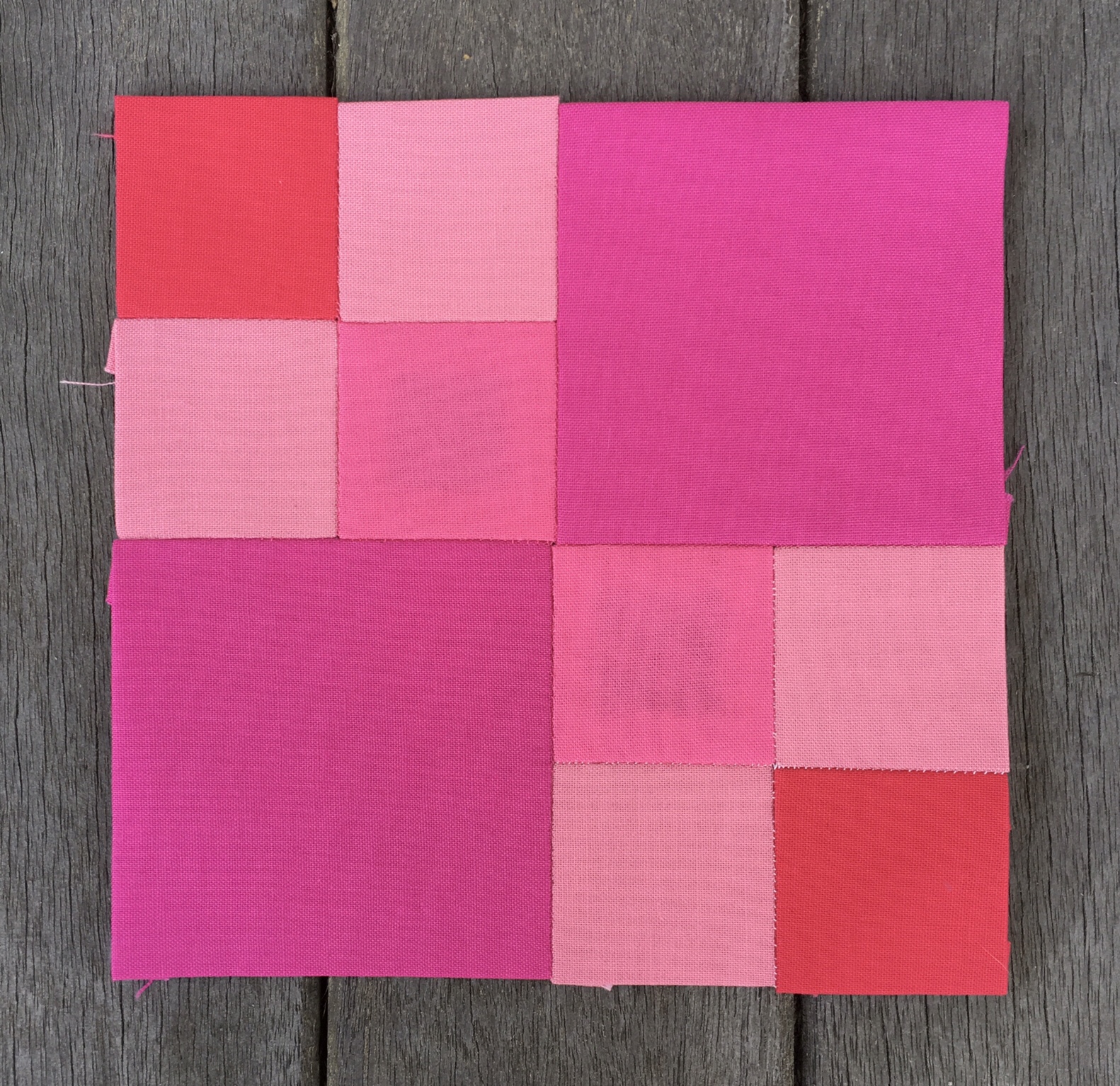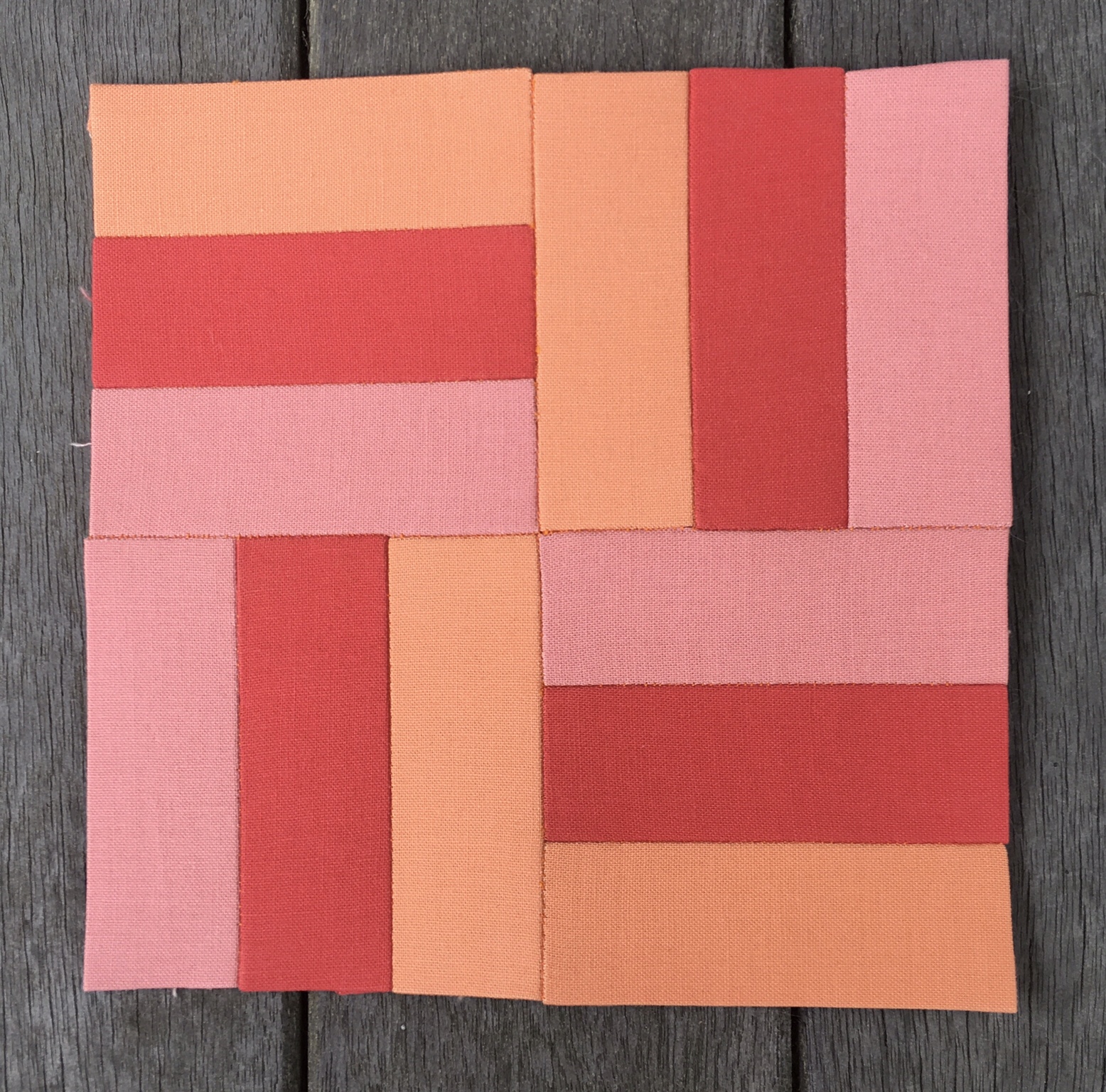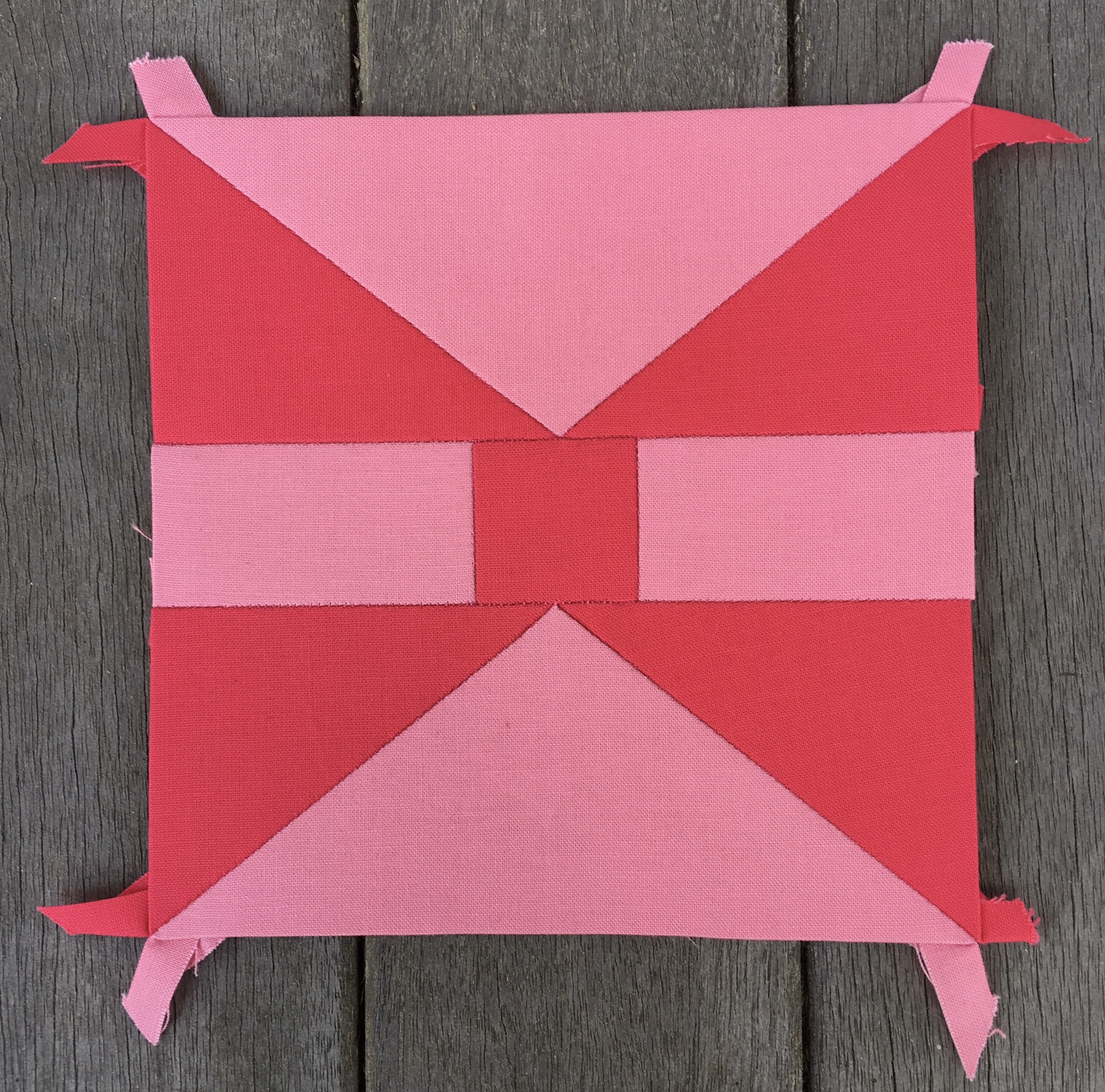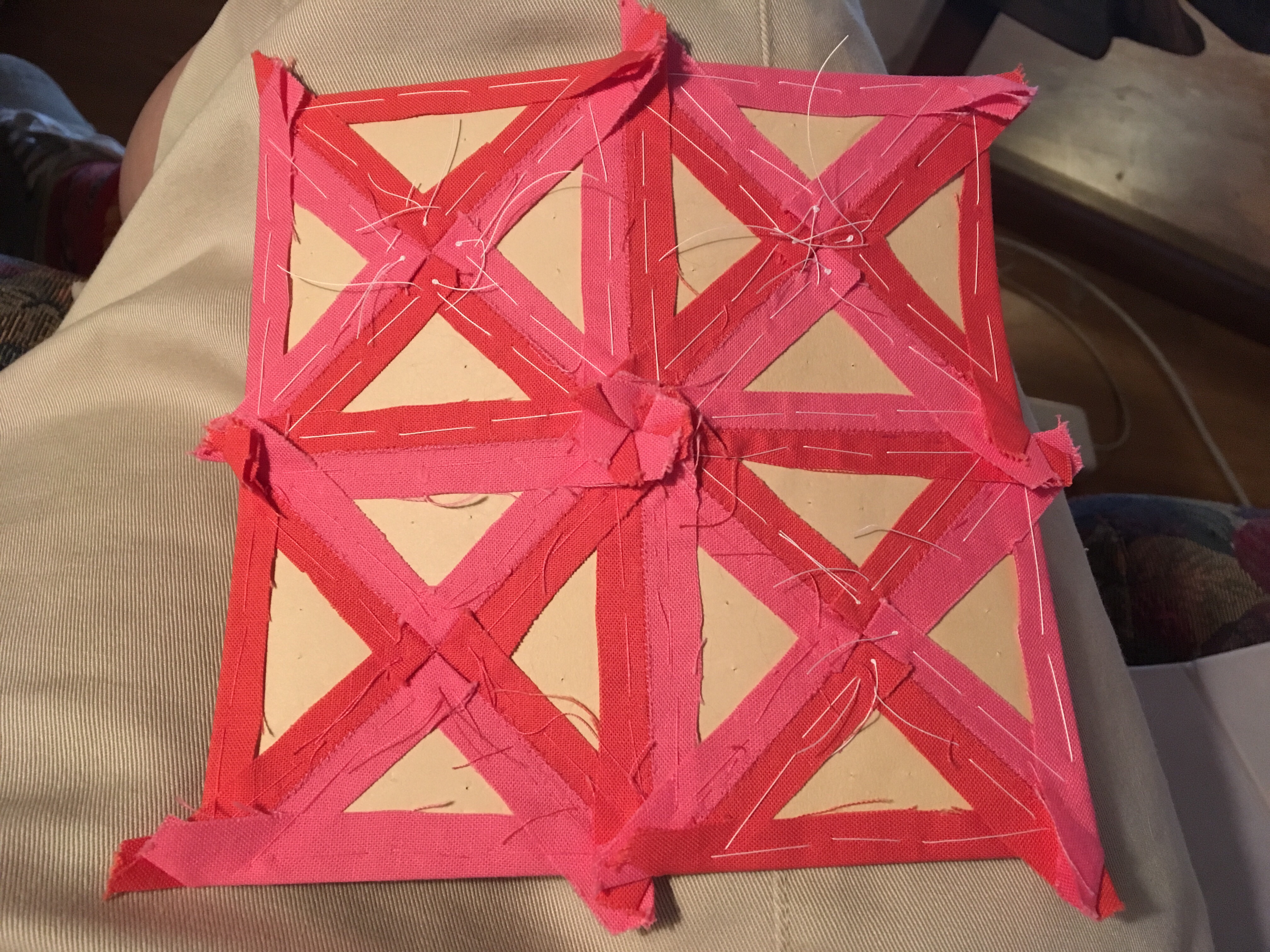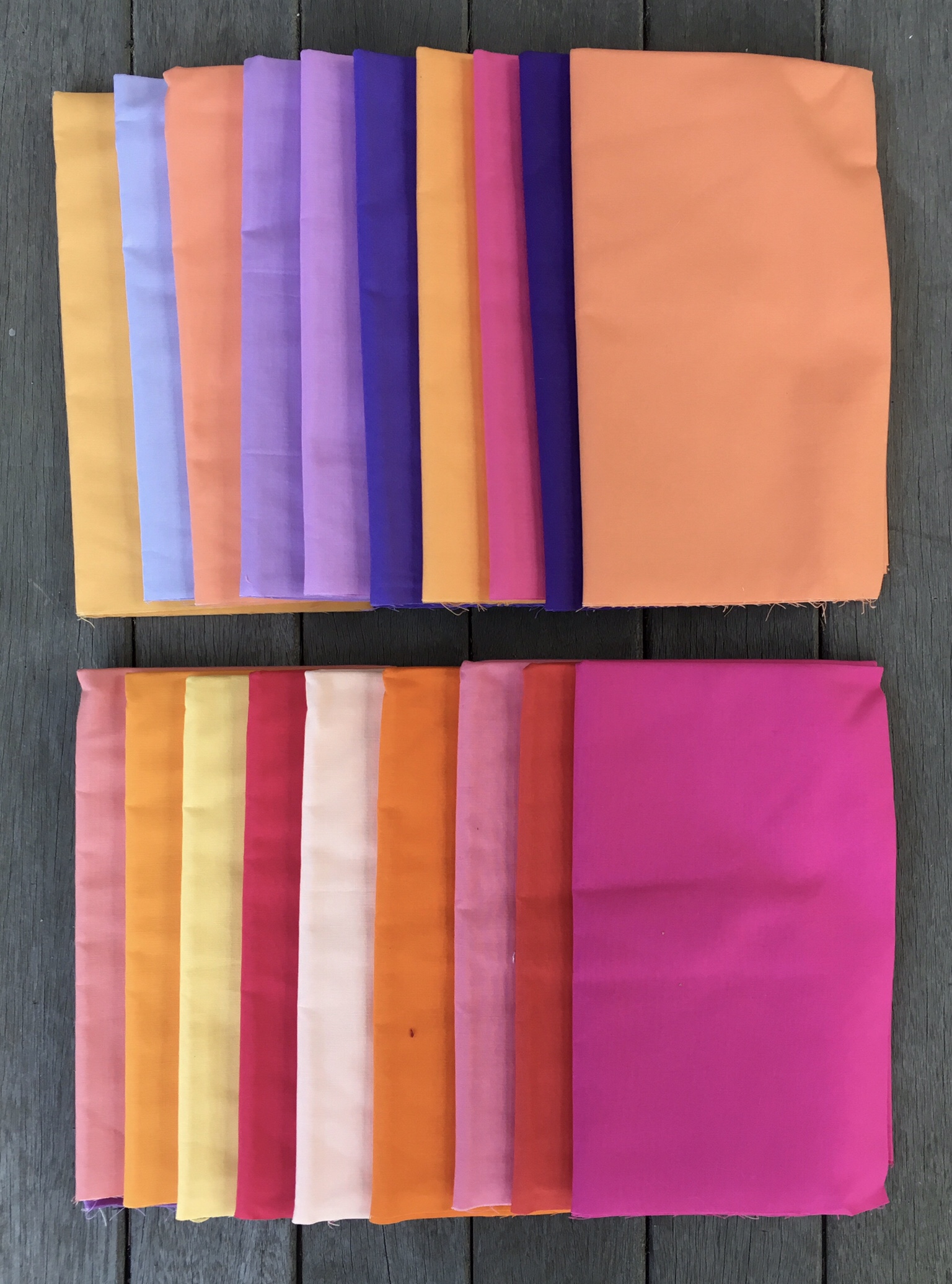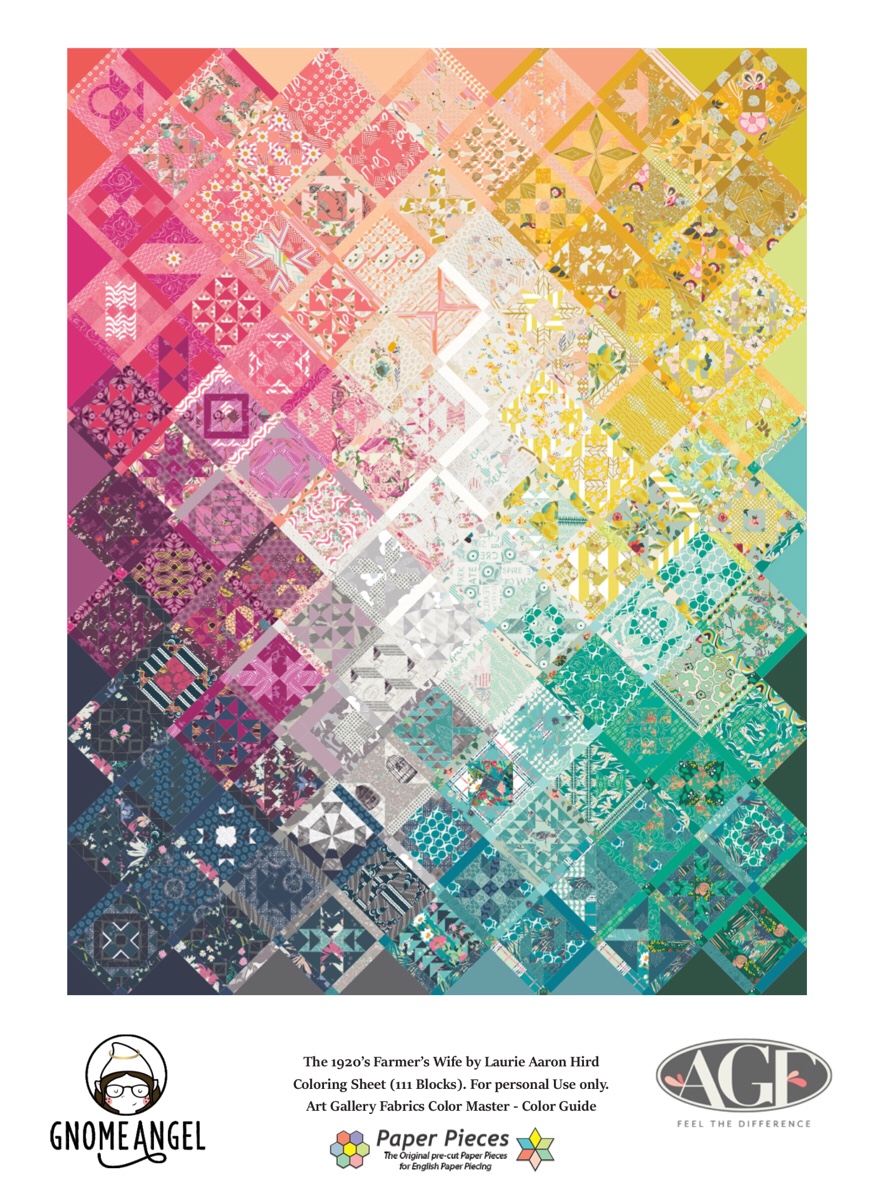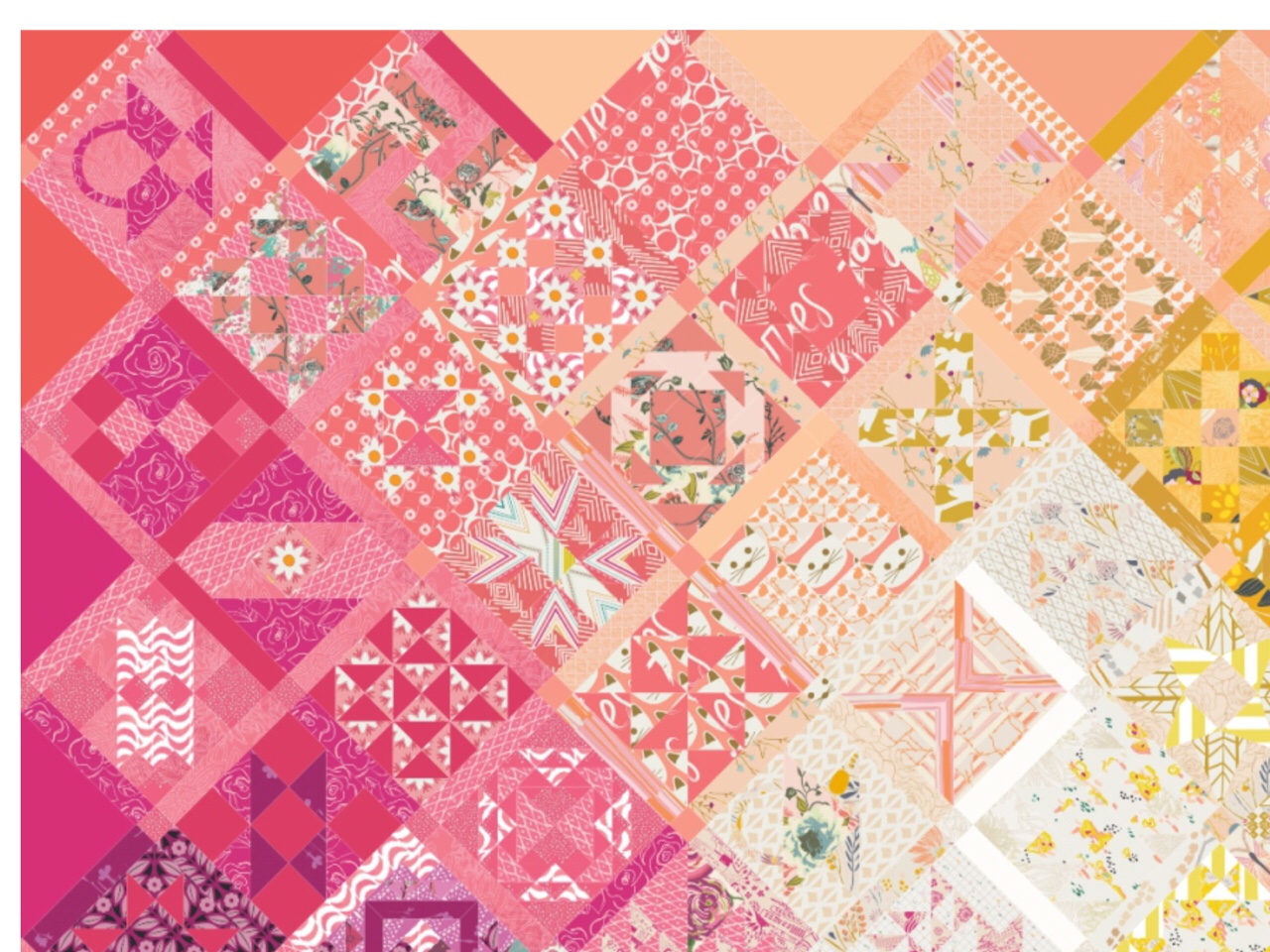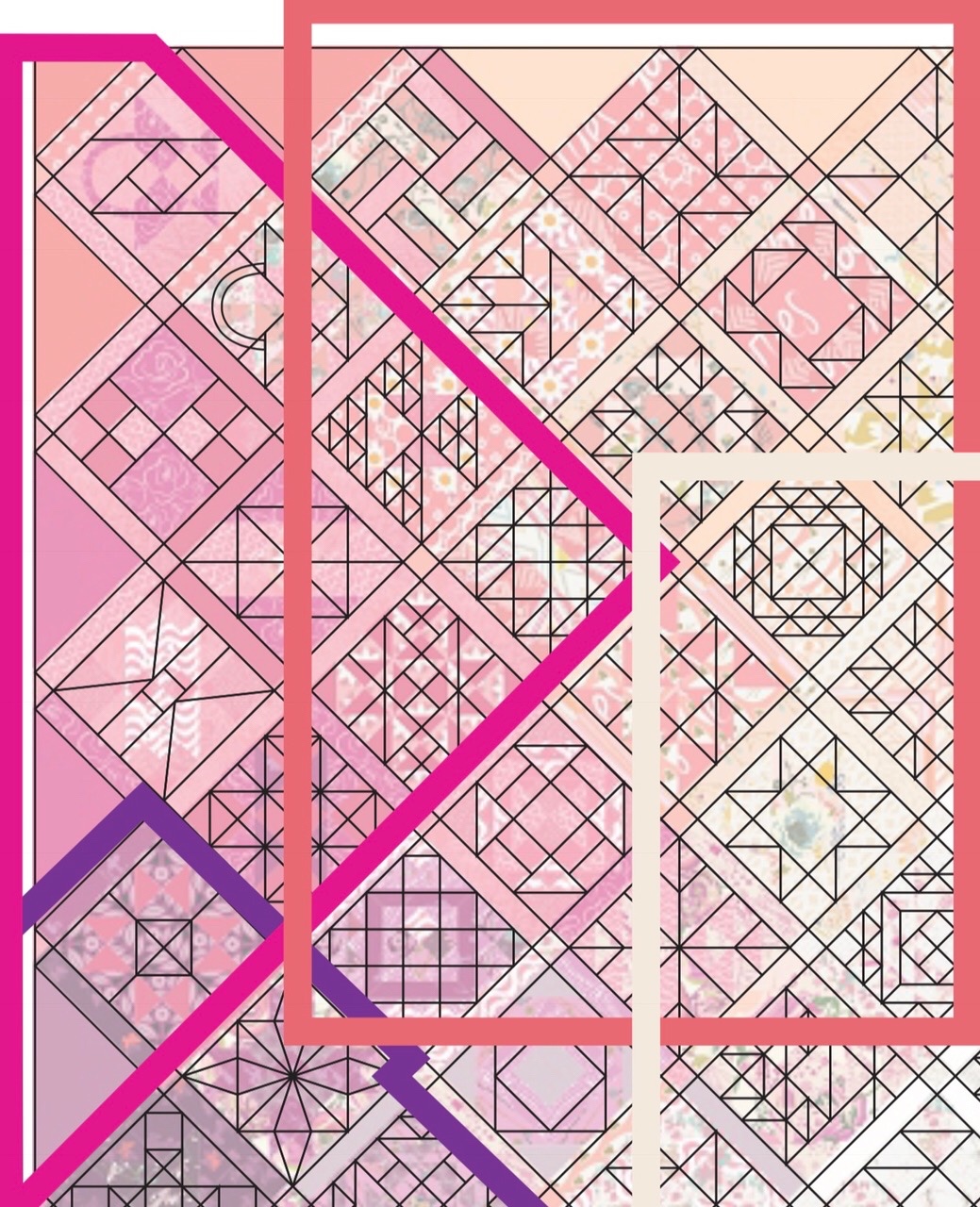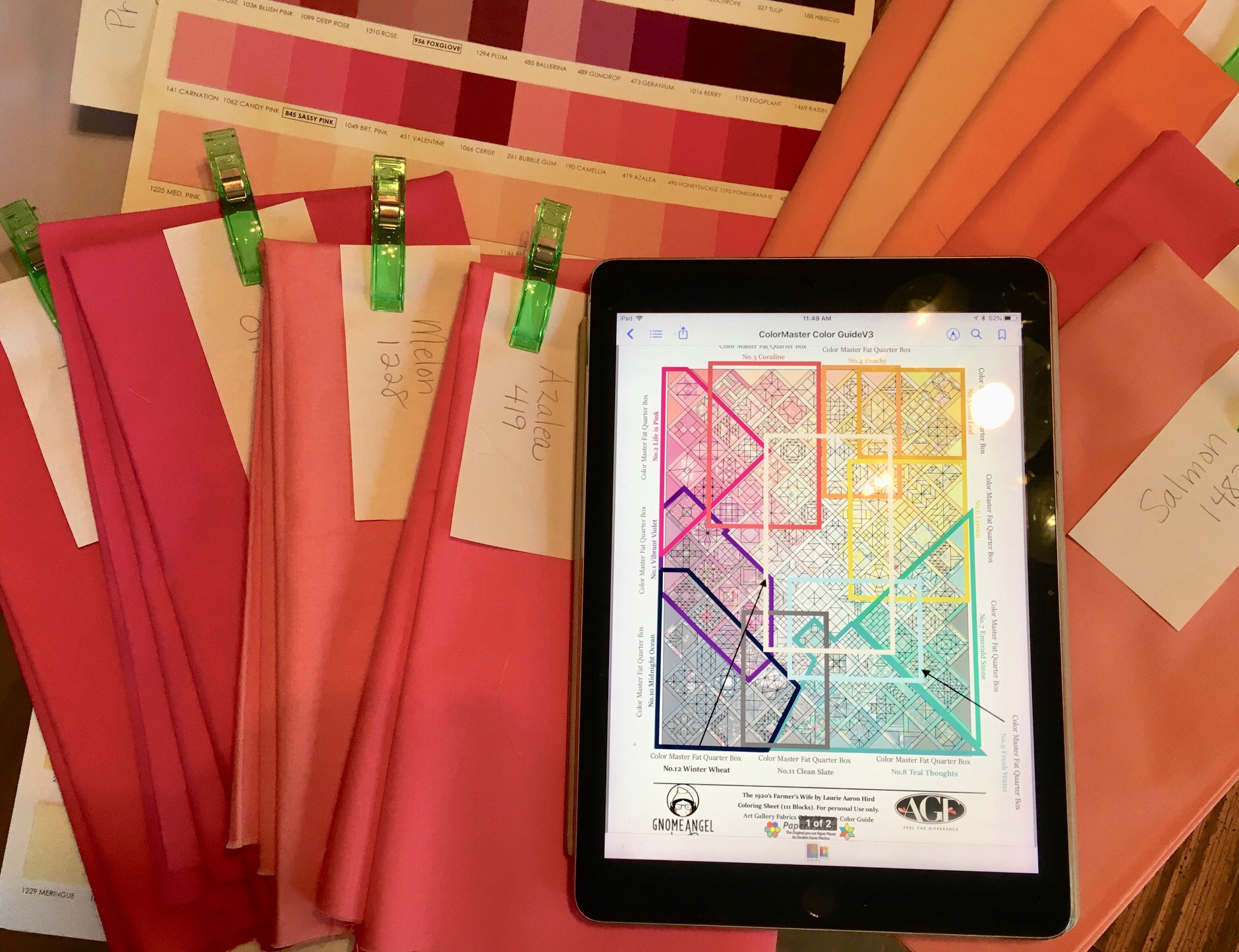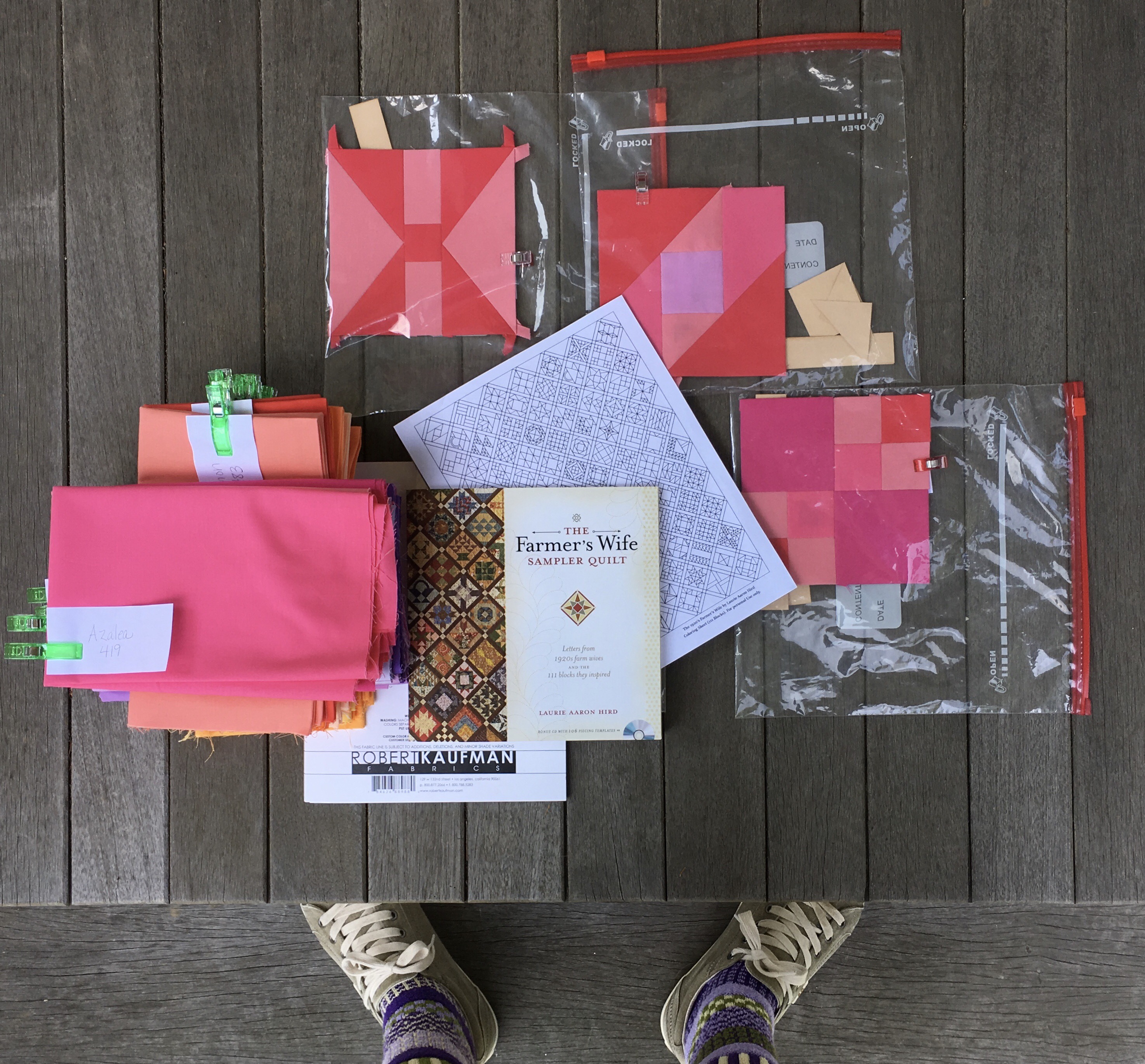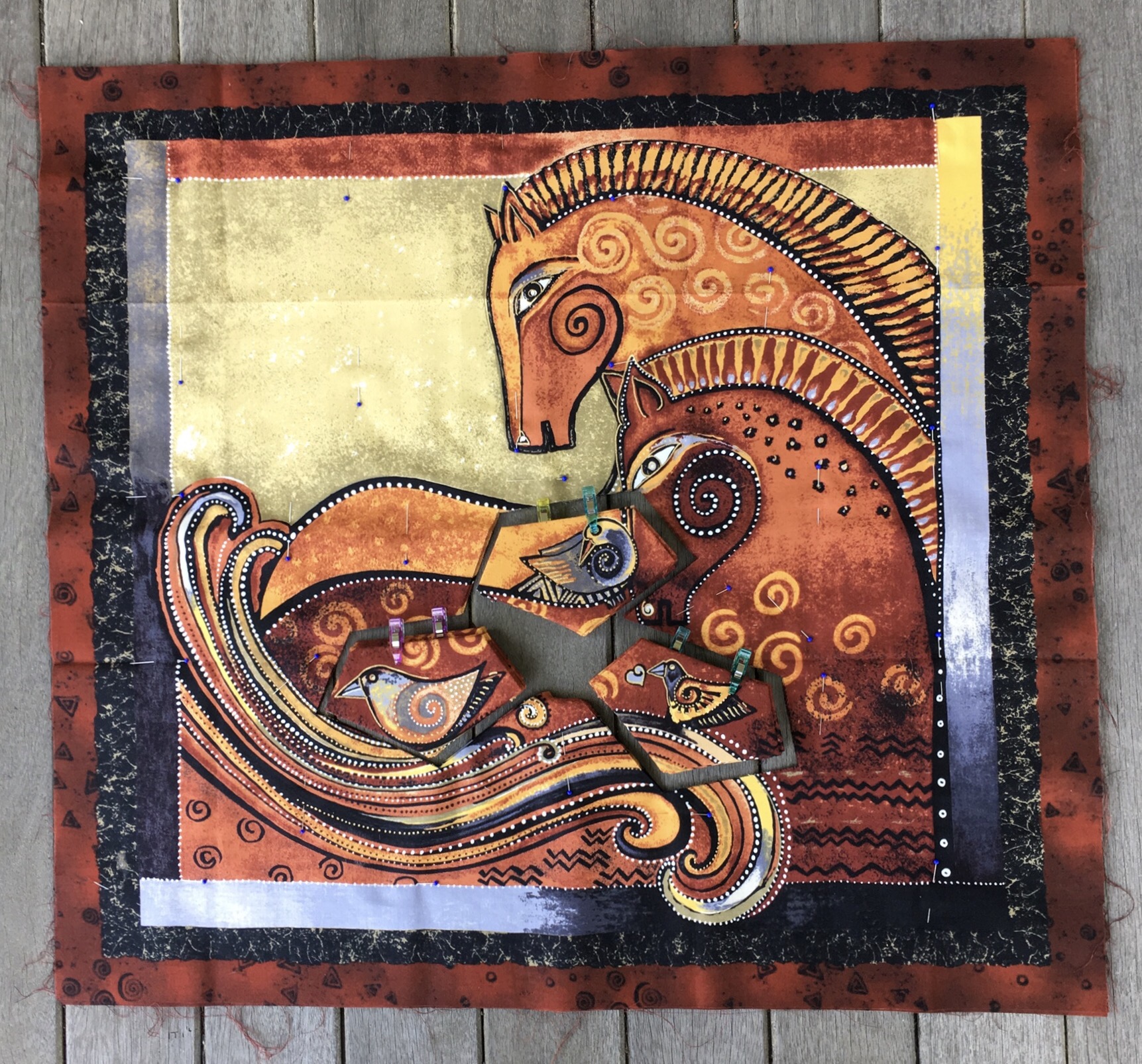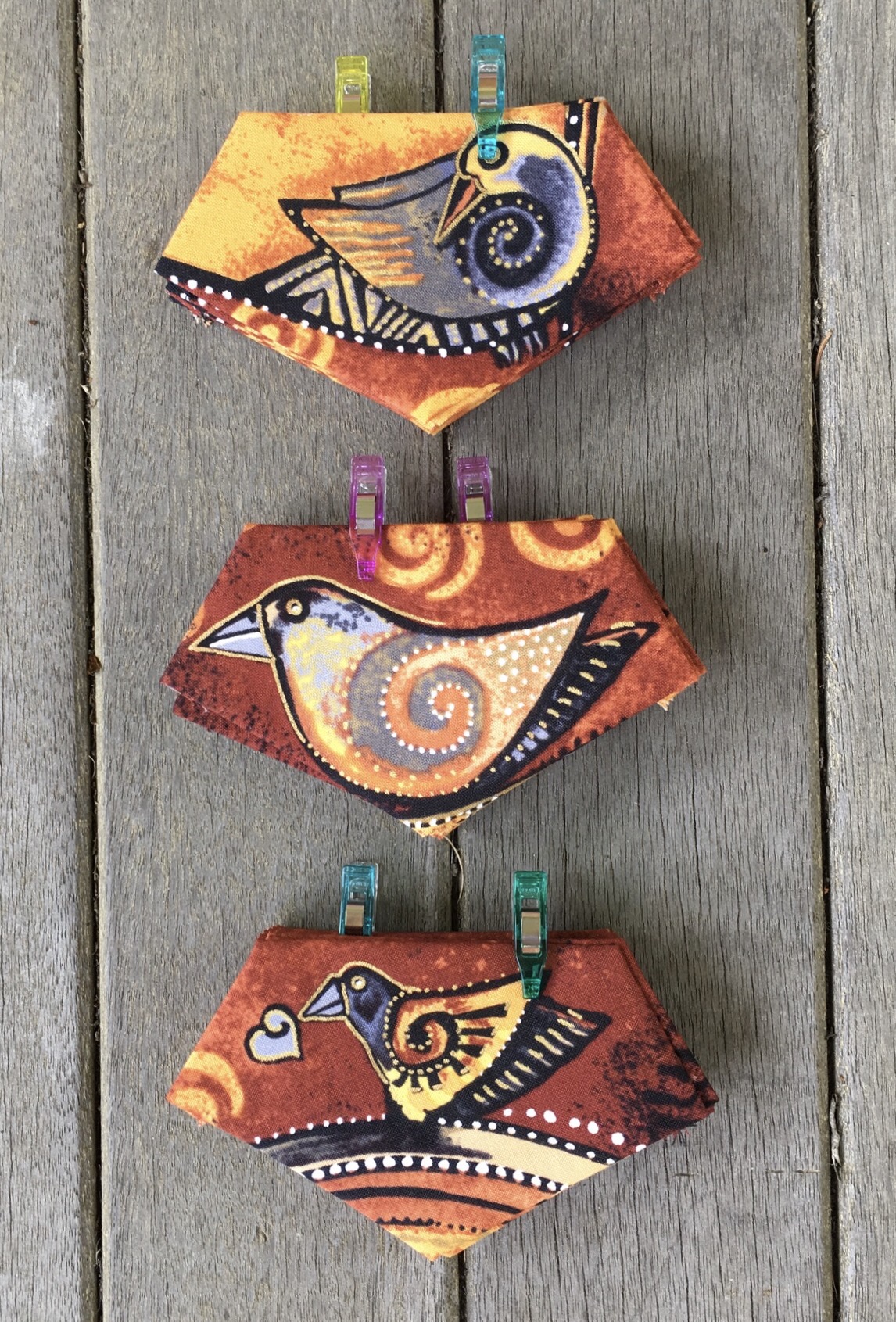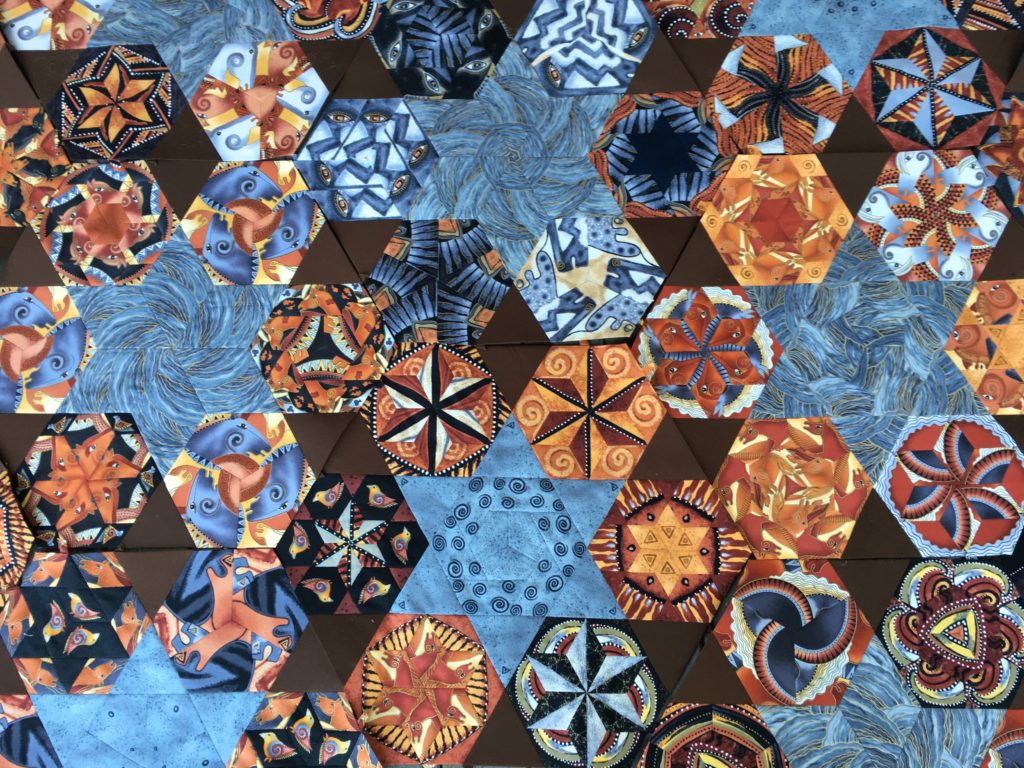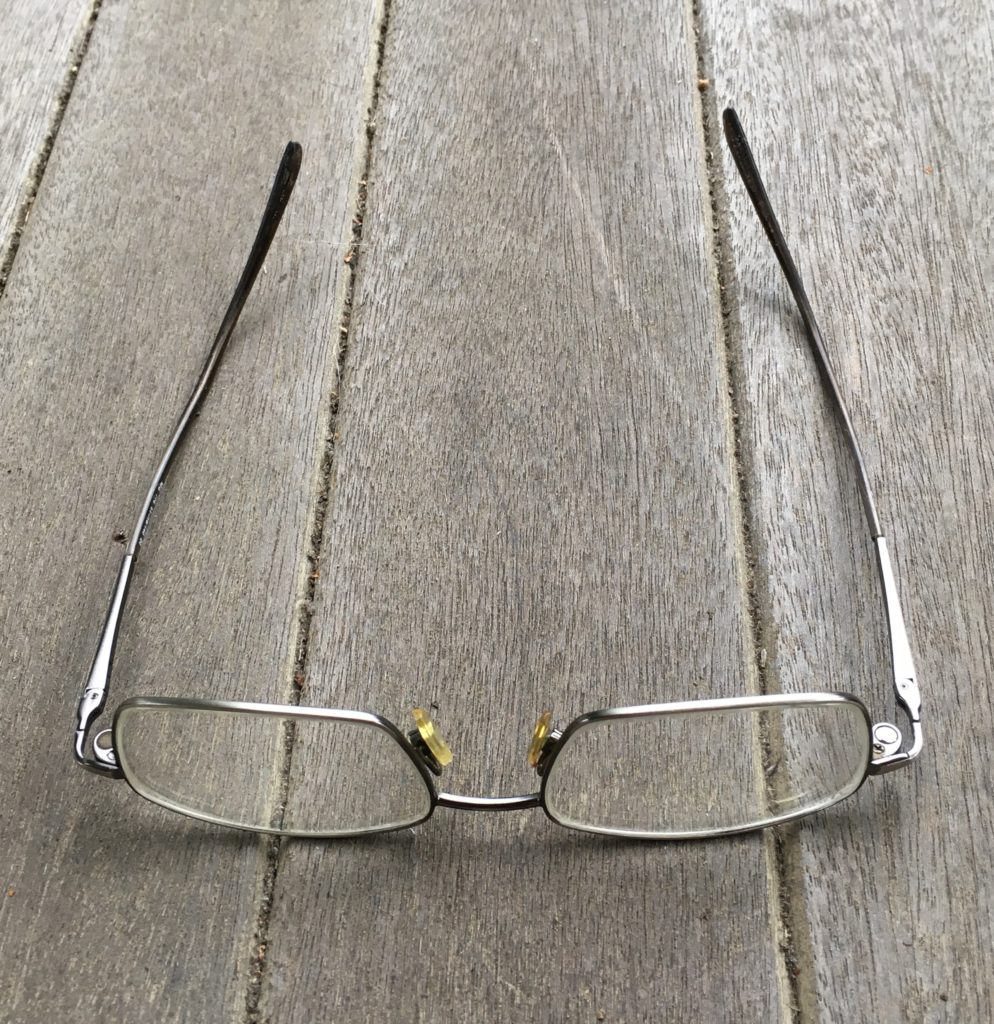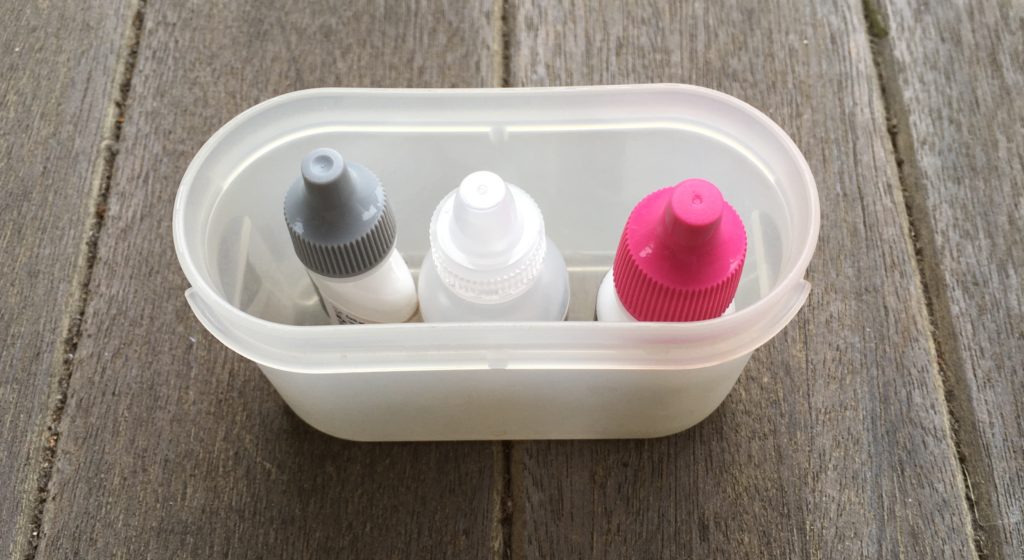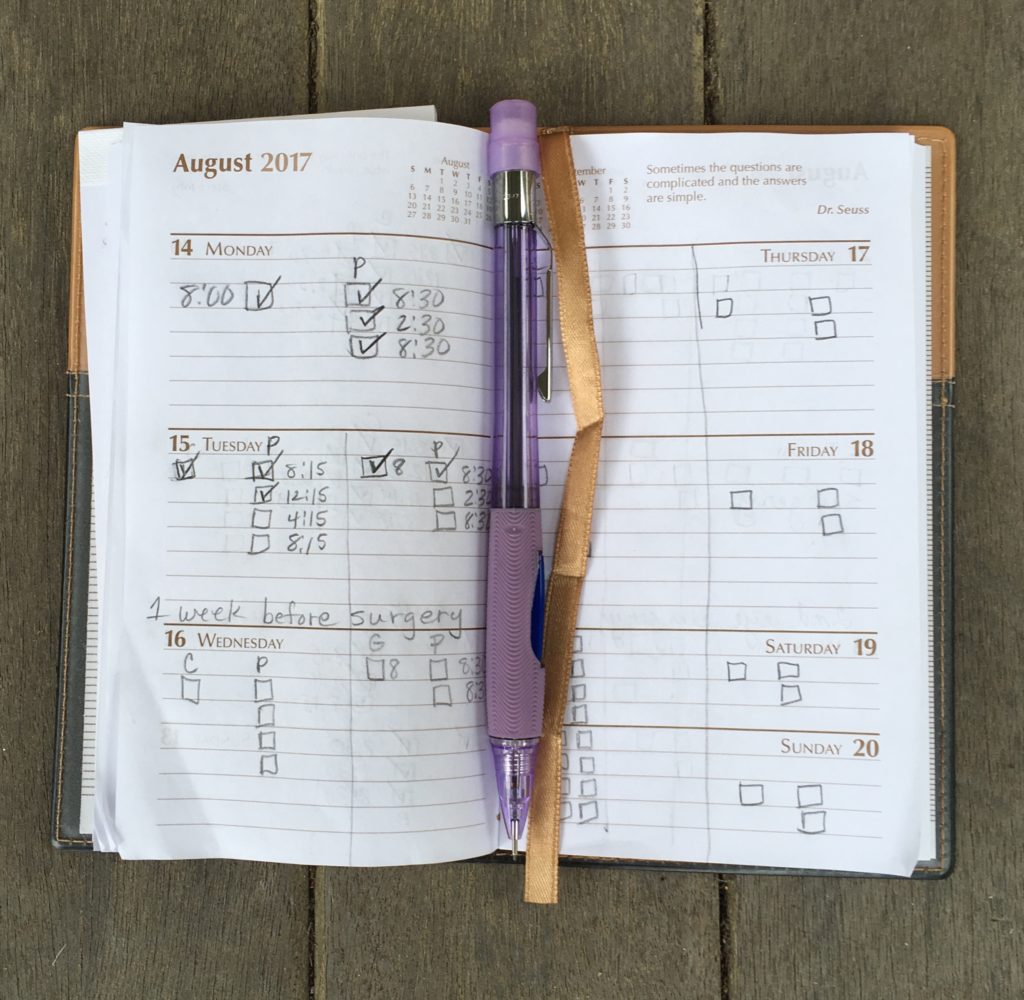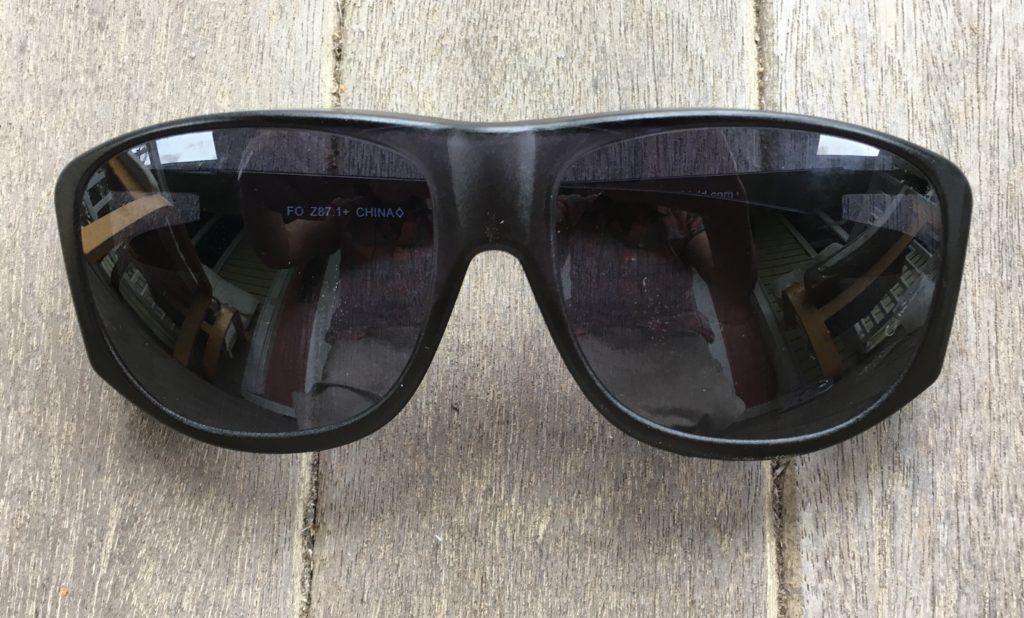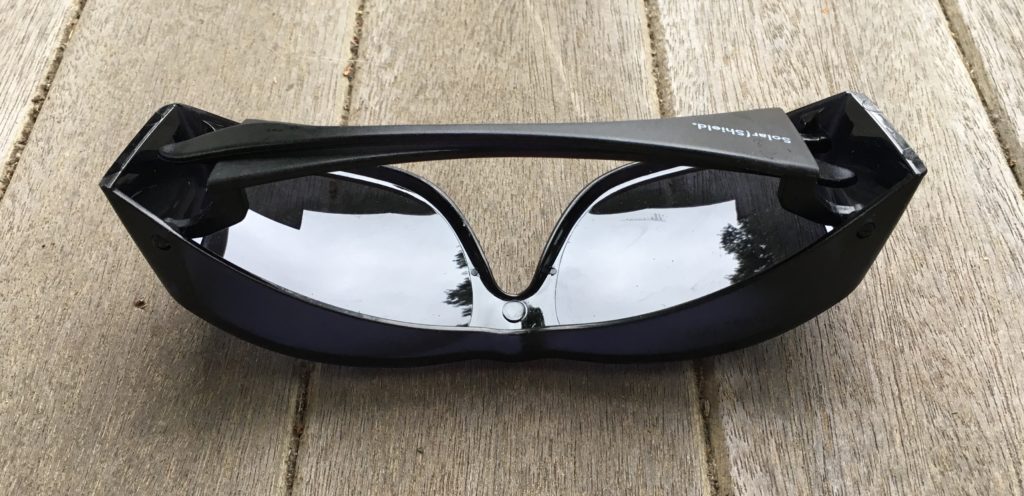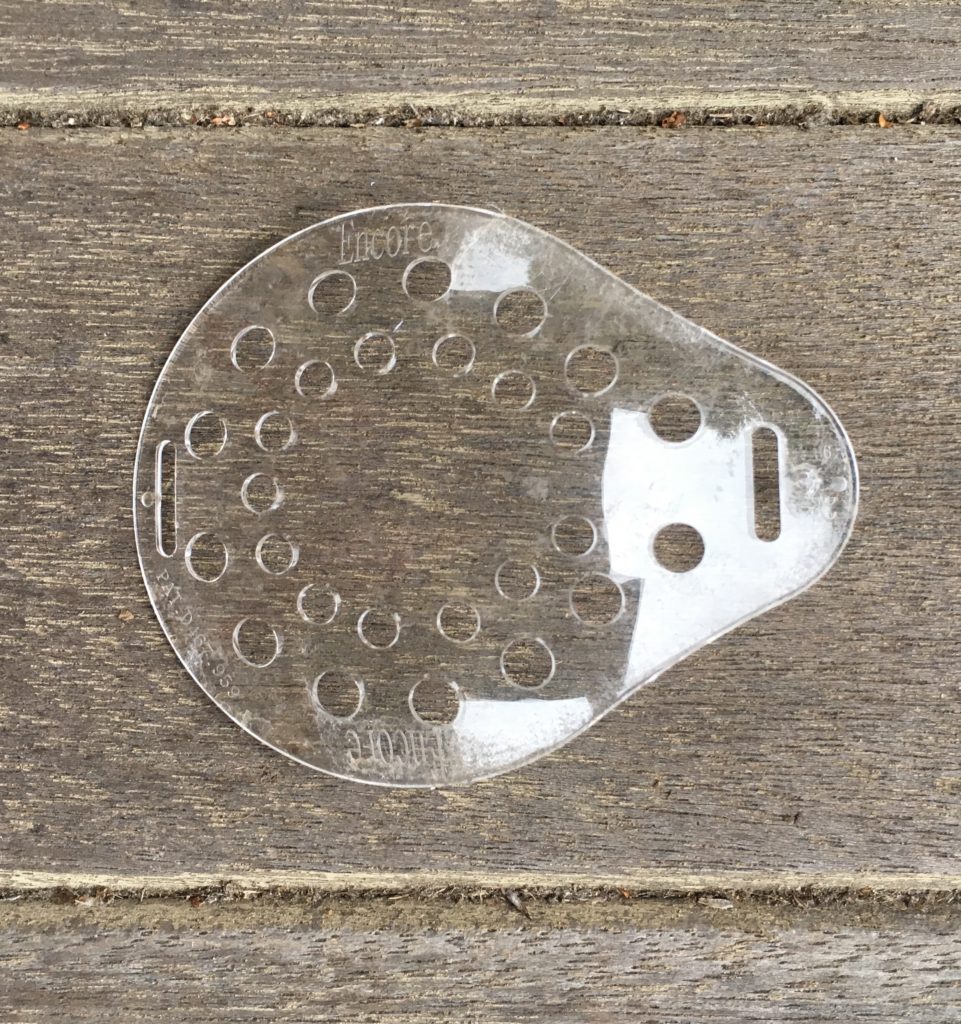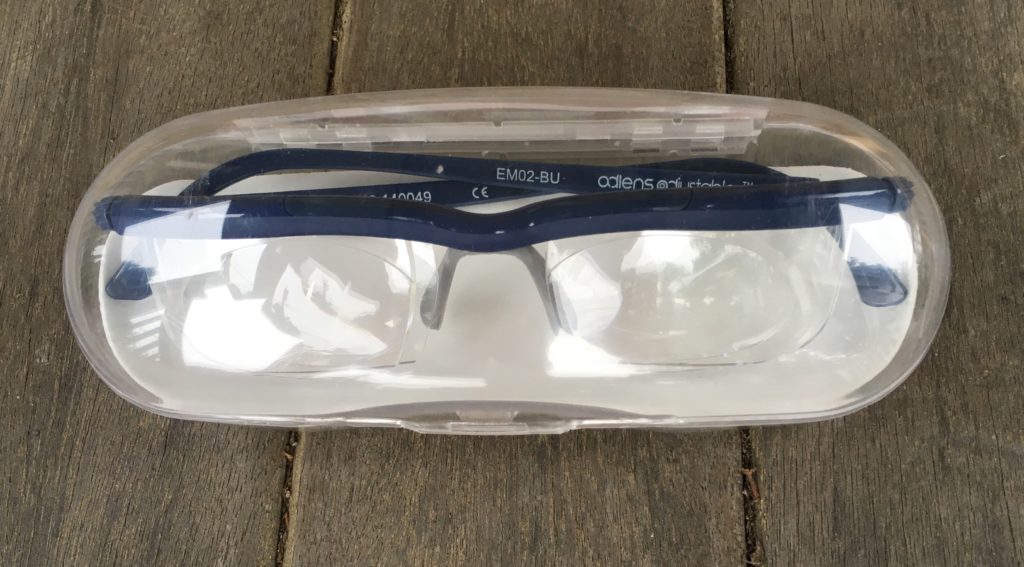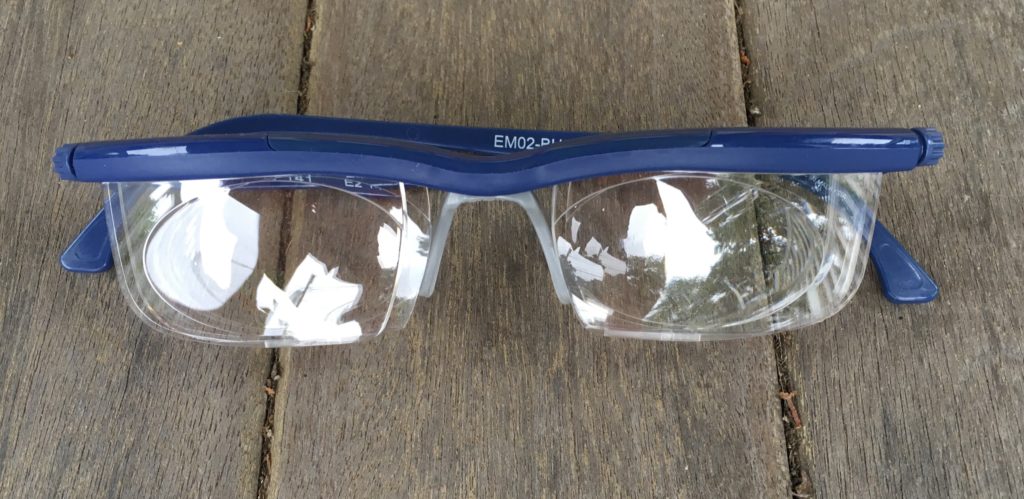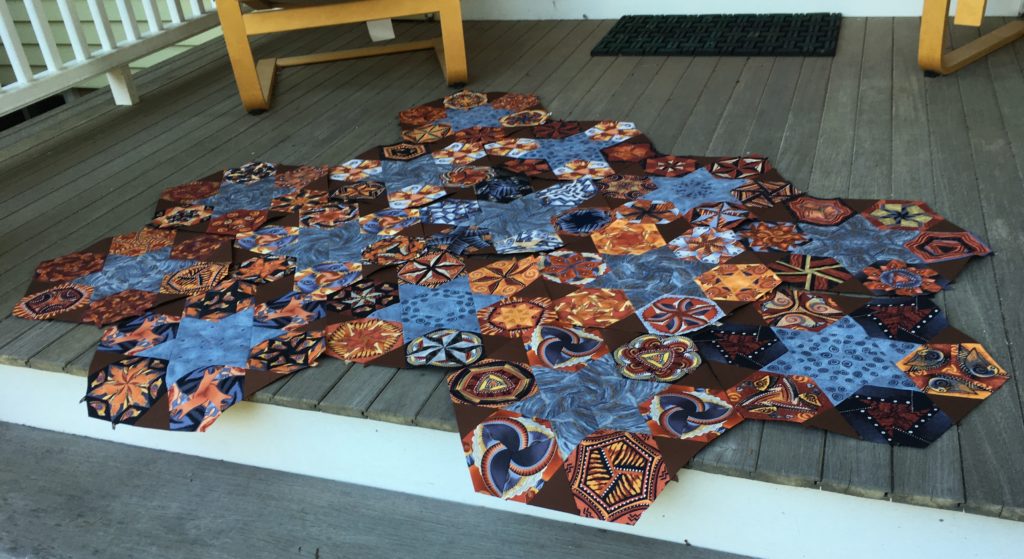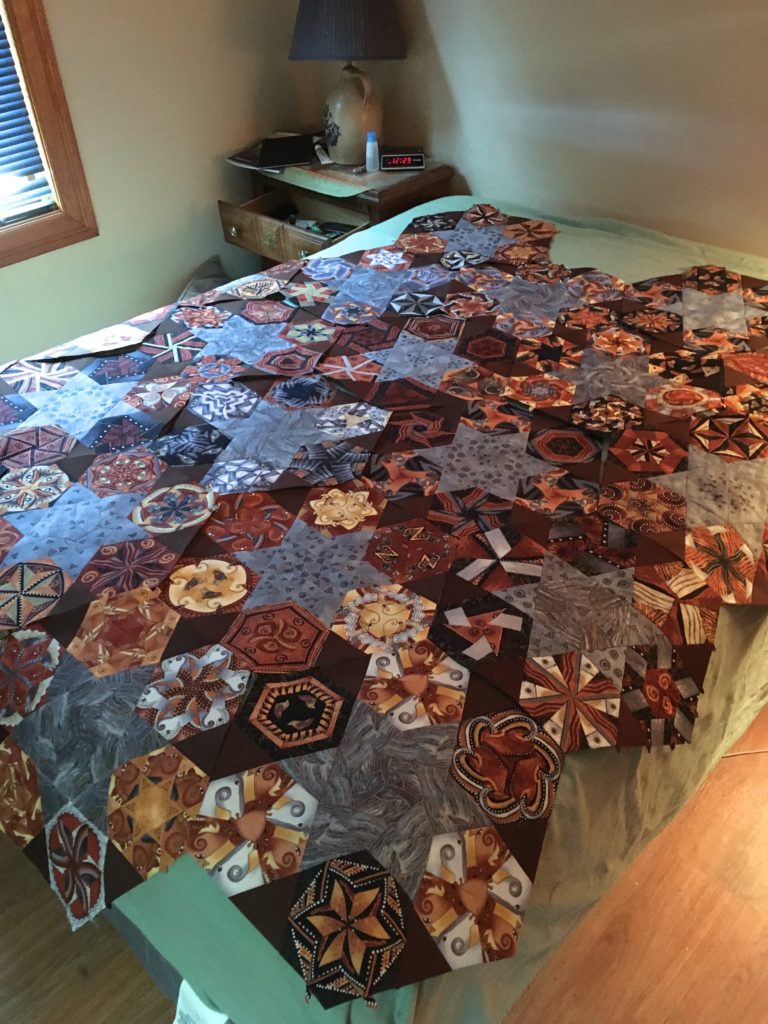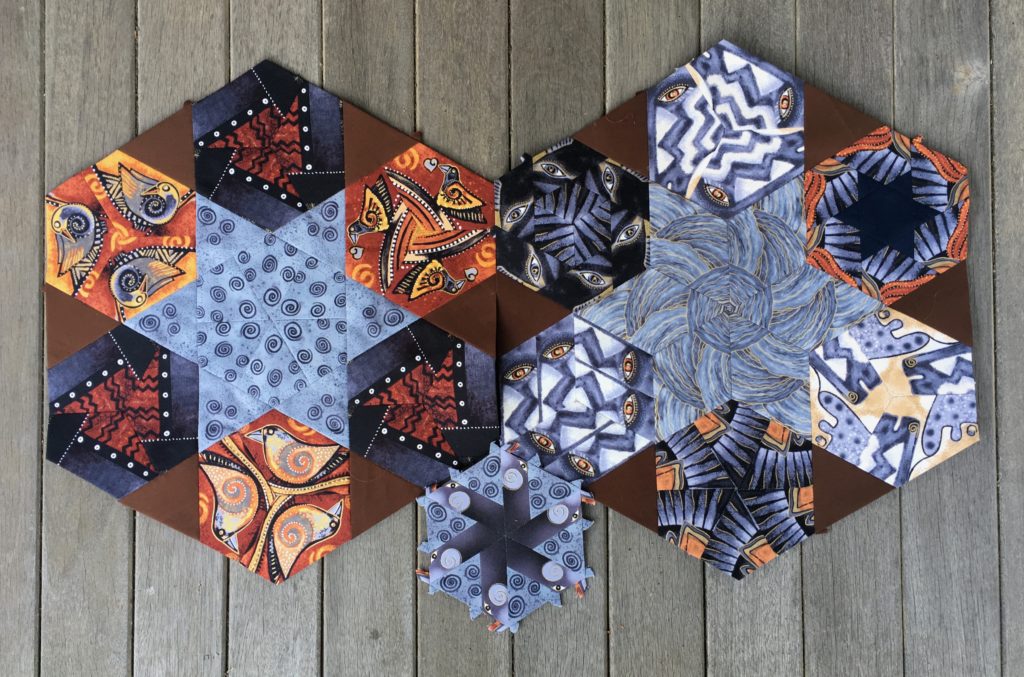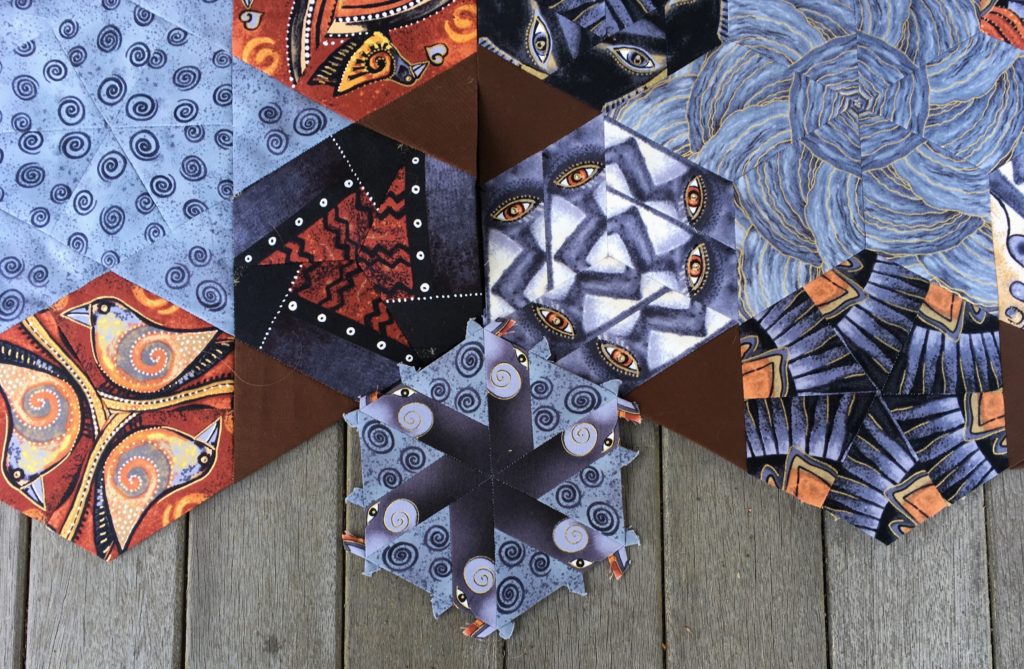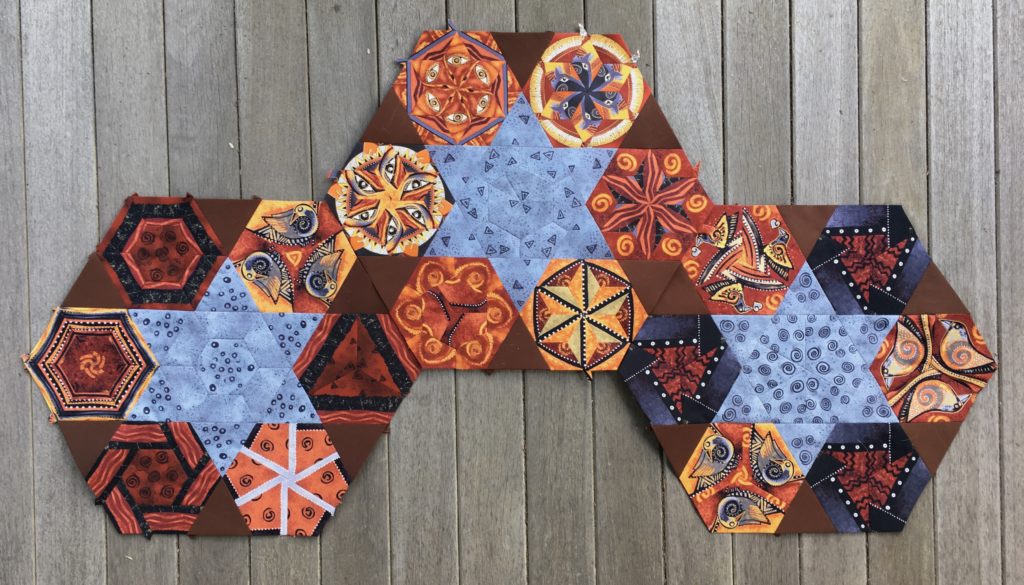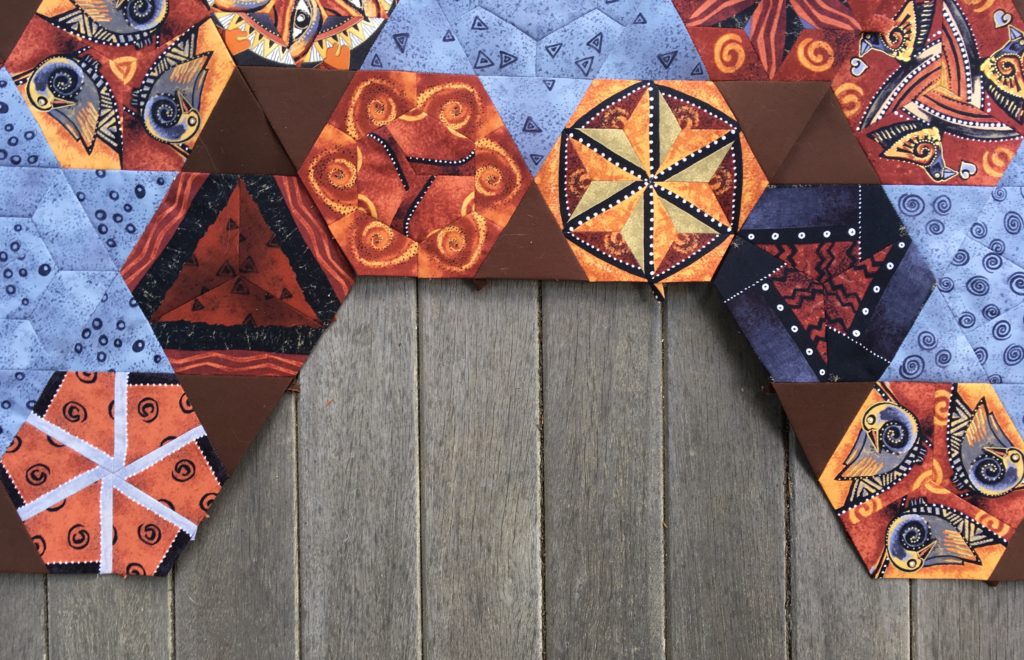It is the end of the second week of work on the EPP version of the Farmer’s Wife Quilt. I have five new blocks to display along with a couple of remade blocks. This puts me six blocks ahead of schedule.
I’ve been working out of sequence this week because I have been waiting for my new shipment of Kona solids to arrive. They should be here today. I kind of jumped around the sequence of things as I made these blocks. I will display them here, however, in the order of the number of the block in the book even though I made some blocks earlier in the sequence.
#3 Basket
Kona solids from light to dark are Salmon and Azalea.
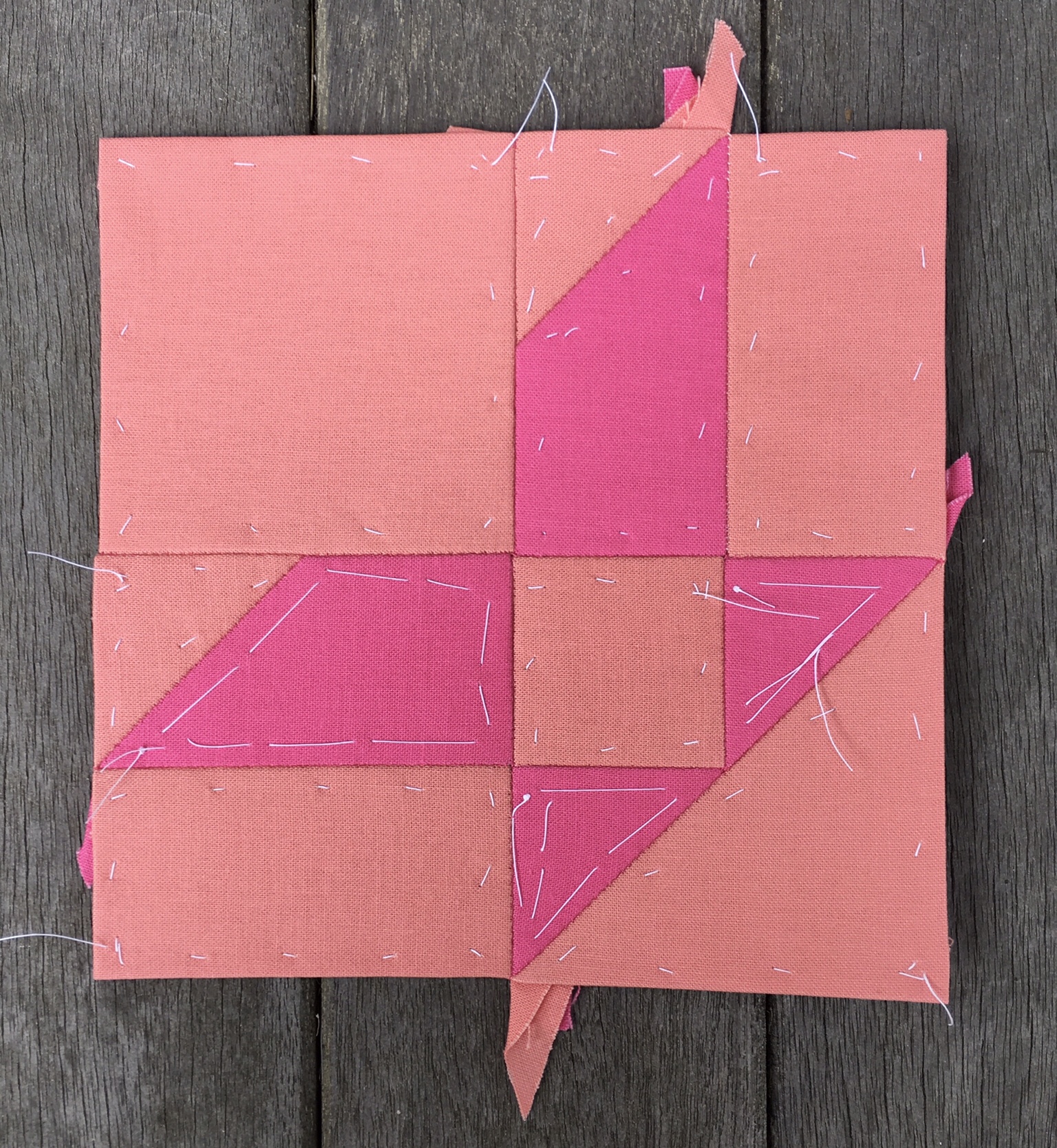
I put off making this block until I had seen the video that Angie Wilson posted about completing the handle. She showed a method for making it and suggested waiting until the block is joined to the sashing and the papers come out before sewing it into place. I’ll be following that advice.
Truthfully I am not altogether sure I want the basket blocks in my quilt, so I might be substituting something else for this block when it comes time to begin assembly.
#8 Bouquet
Kona solids from light to dark are Salmon, Cantaloupe, Orange, and Coral.

I’m not really happy with the way the colors work in this block. It seems unbalanced. The Orange doesn’t seem to belong, and the Coral isn’t balanced. I might remake this block.
I used the flat back stitch on this block. I wanted to give that stitch a try because those who use it swear by it. I’m not sure how I feel. I love the way the stitches don’t show on the front. I love the way the points come out perfectly. I dislike the fact that it takes twice as long to sew a seam. Also in this block I found that the Orange pieces, in particular, seemed to be a bit loose. I took out the papers I could remove, and that did not help the situation. If anything it made things worse. I’m thinking that this would not have happened with my whip stitch.
I am thinking of doing this again and switching out the Orange for Coral. I will also whip stitch it.
This block does not follow the seams in the book. I managed to eliminate three unnecessary seams.
#9 Box
Kona solids from light to dark are Melon and Orange.
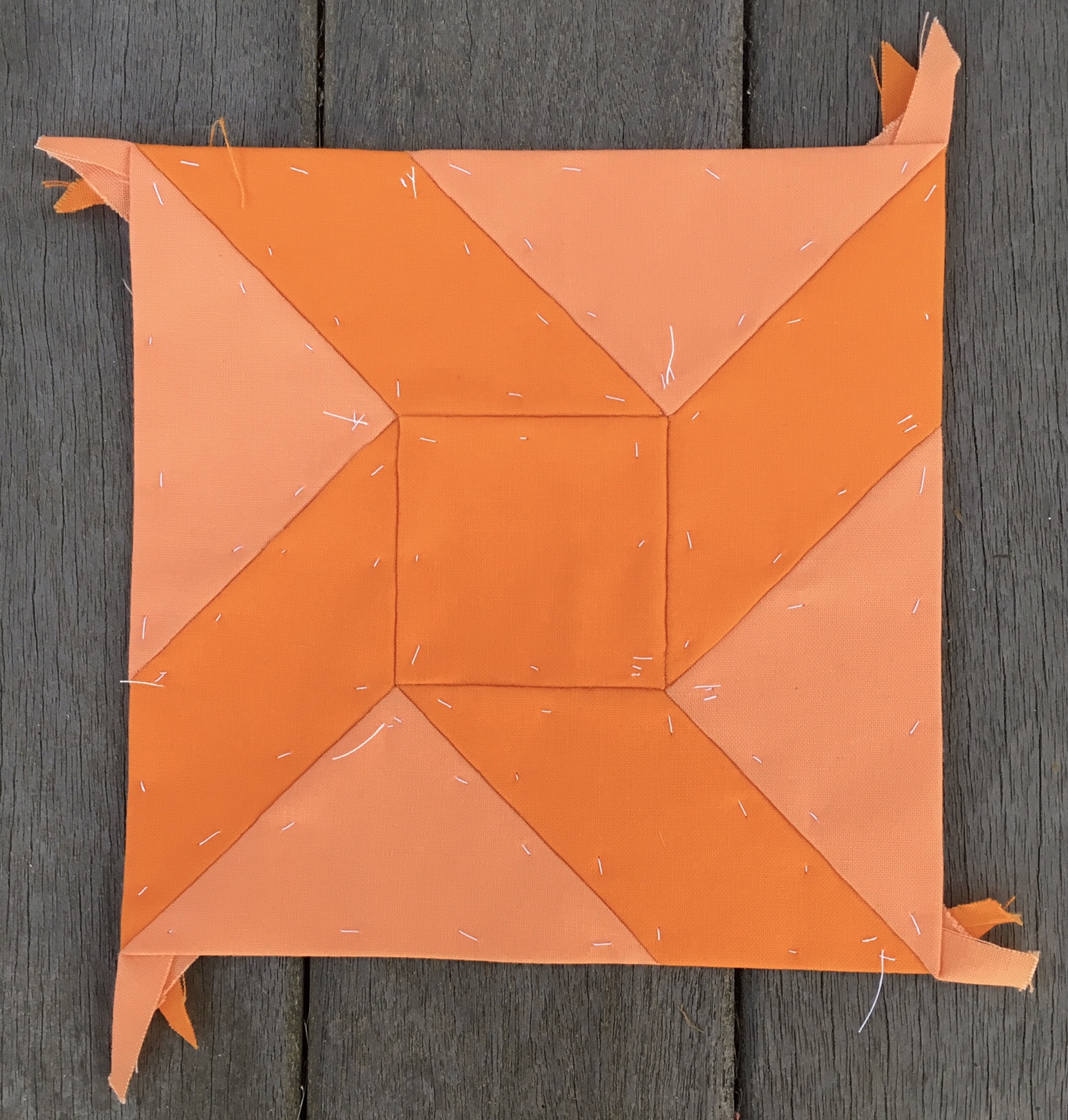
This is actually the second version of #9 Box. The first version used Cantaloupe and Orange. It also had many more seams and pieces. I decided to redo it by hand drawing the block with drafting tools, and erasing unnecessary lines.
Here is the first version with so many unnecessary seams and pieces.

Both of these blocks were constructed using the flat back stitch. This was the first block on which I tried the fat back stitch.
Here is a photo showing both blocks for comparison.
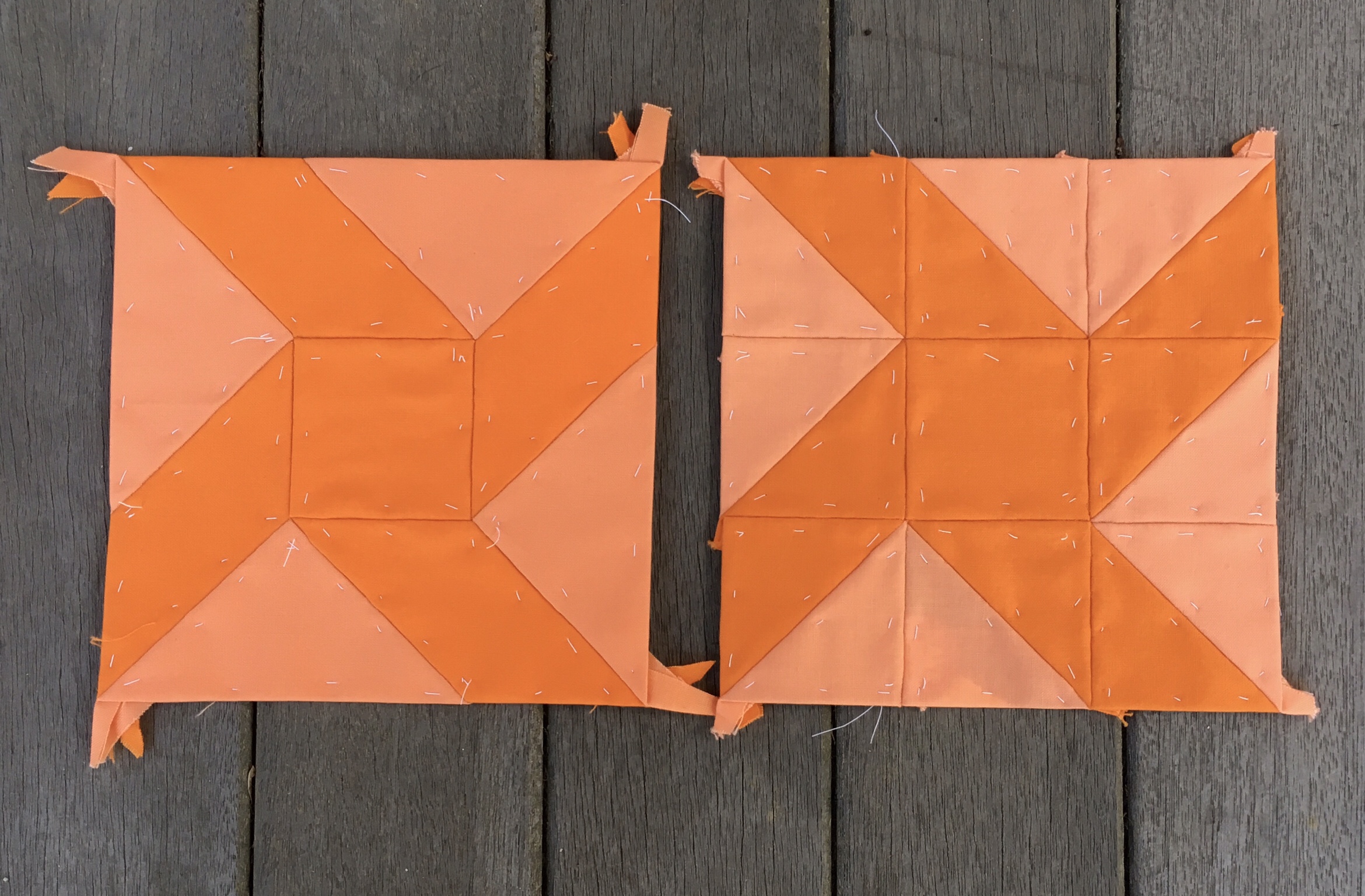
I like the lower contrast on the block to the left.
#10 Bowtie
Kona solids from light to dark are Ballerina, Pansy, and Morning Glory.
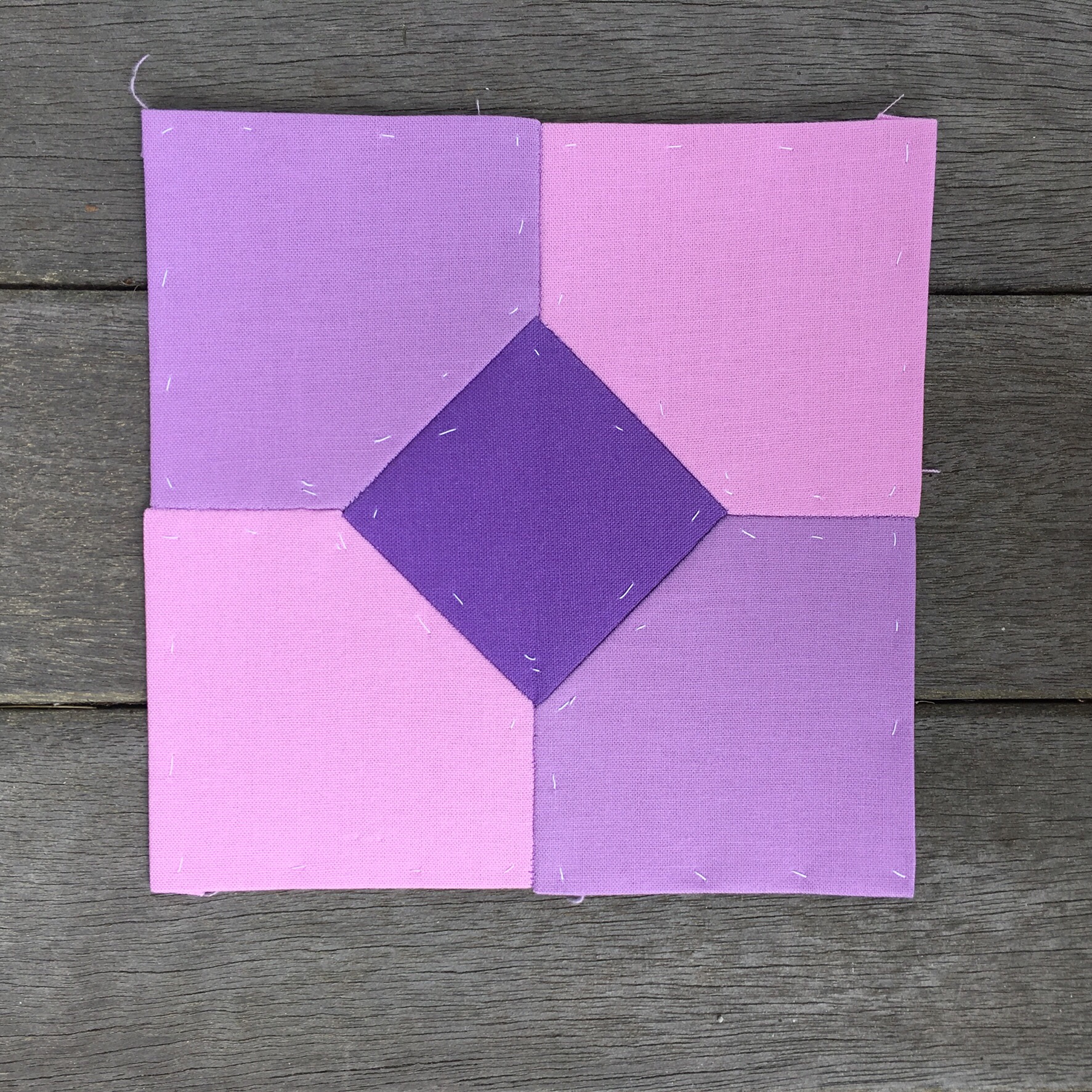
This was actually the first block in which I deviated from the prescribed pieces and seams in the book. It was such an obvious choice. The prescribed Piecing was so obviously anti EPP.
The central square in this block is supposed to be composed of four triangles. This allows the individual triangles to be joined to the adjacent pieces before joining the four quadrants of the block, thus avoiding Y seams. That is great for machine piecing, but is downright stupid for EPP, a method that laughs at the Y seam, or at least embraces it.
I had completed #9 Box using the prescribed method before I caught on that I could cut down on pieces and seams.
#15 Buzzard’s Roost
Kona solids from light to dark are Peach and Mango.
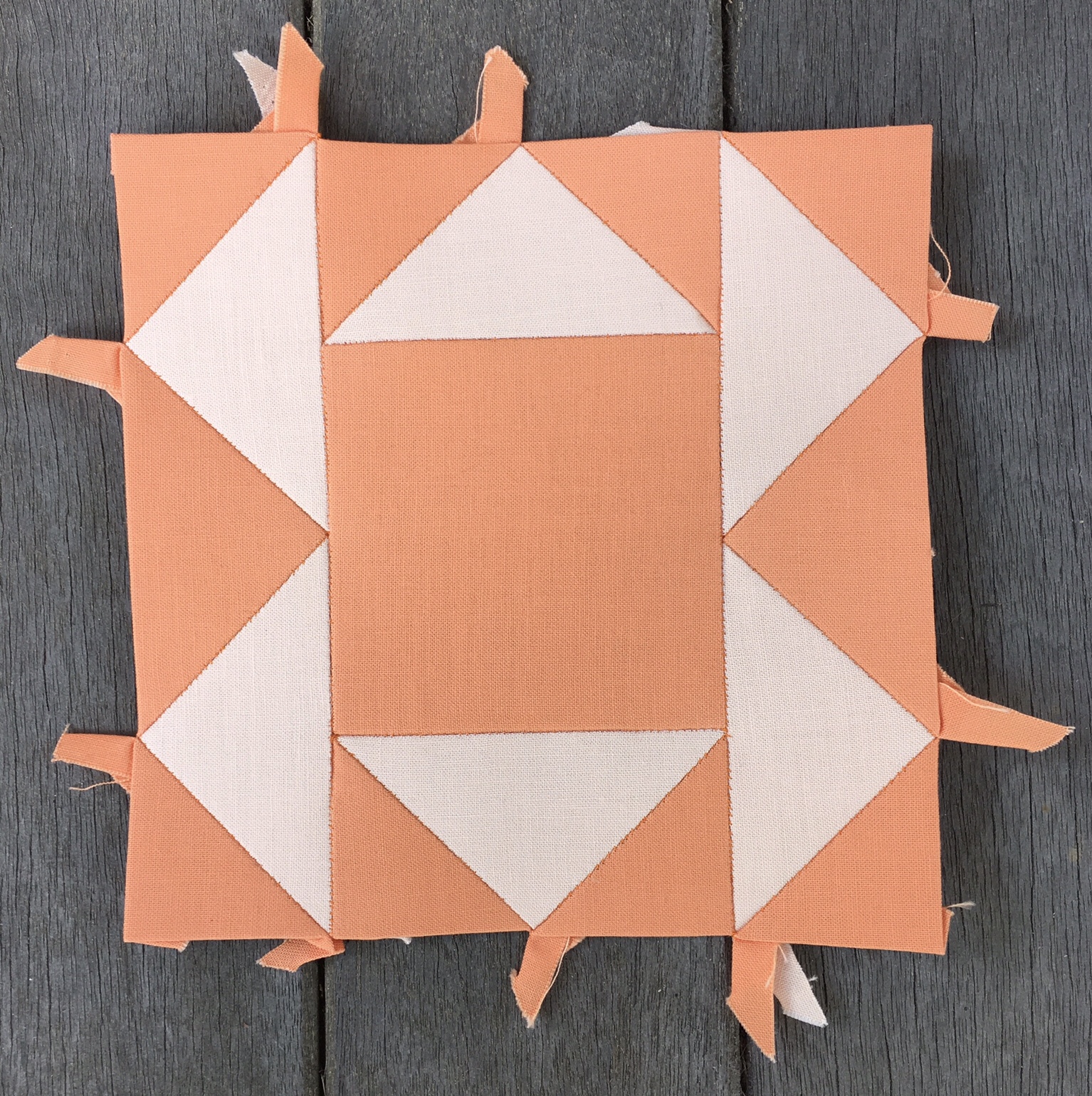
This is a high contrast block, but not nearly as high in contrast as it appears to be here. The Peach fabric looks darker in person. Peach is the lightest value fabric I have in my collection of oranges. I am considering using it for sashing in the peachy color area.
This week’s work has prompted me to look carefully at the construction of the blocks in the book. I wonder how many can be simplified for EPP.
Interestingly, blocks that do not follow the seams in the book are not eligible to be entered for prizes for the sew along. That is fine by me. I’m more interested in living up to the spirit of EPP than I am in winning prizes.
I have one more block to share this week. It is a remake of a block from last week.
#4 Basket Weave (revisited)
Kona solids from light to dark are Salmon, Mango, and Coral.
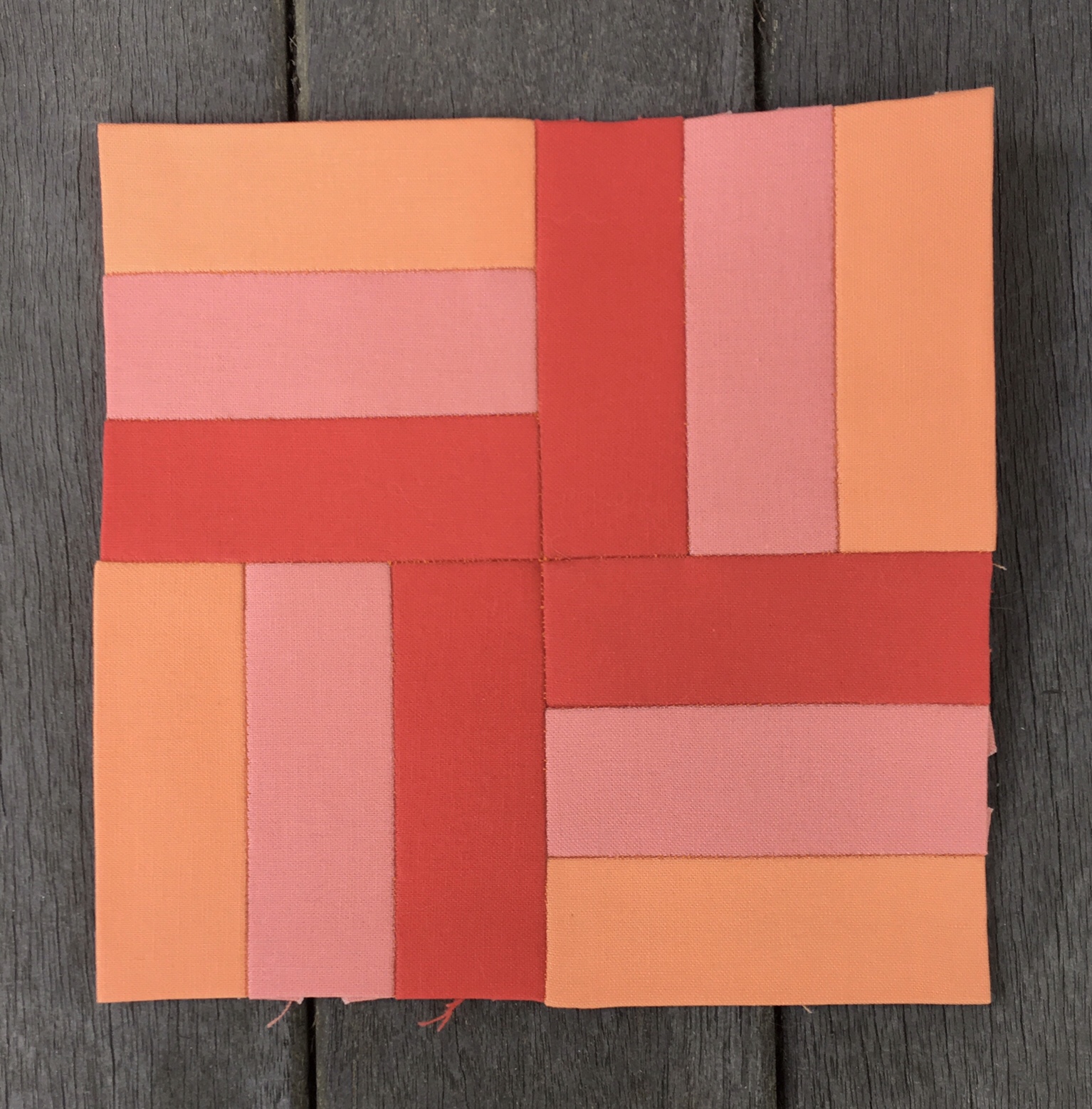
After viewing Angie’s version of this block I decided to redo mine in a similar configuration. It is much more like a windmill, and less like a Swastika this way.
